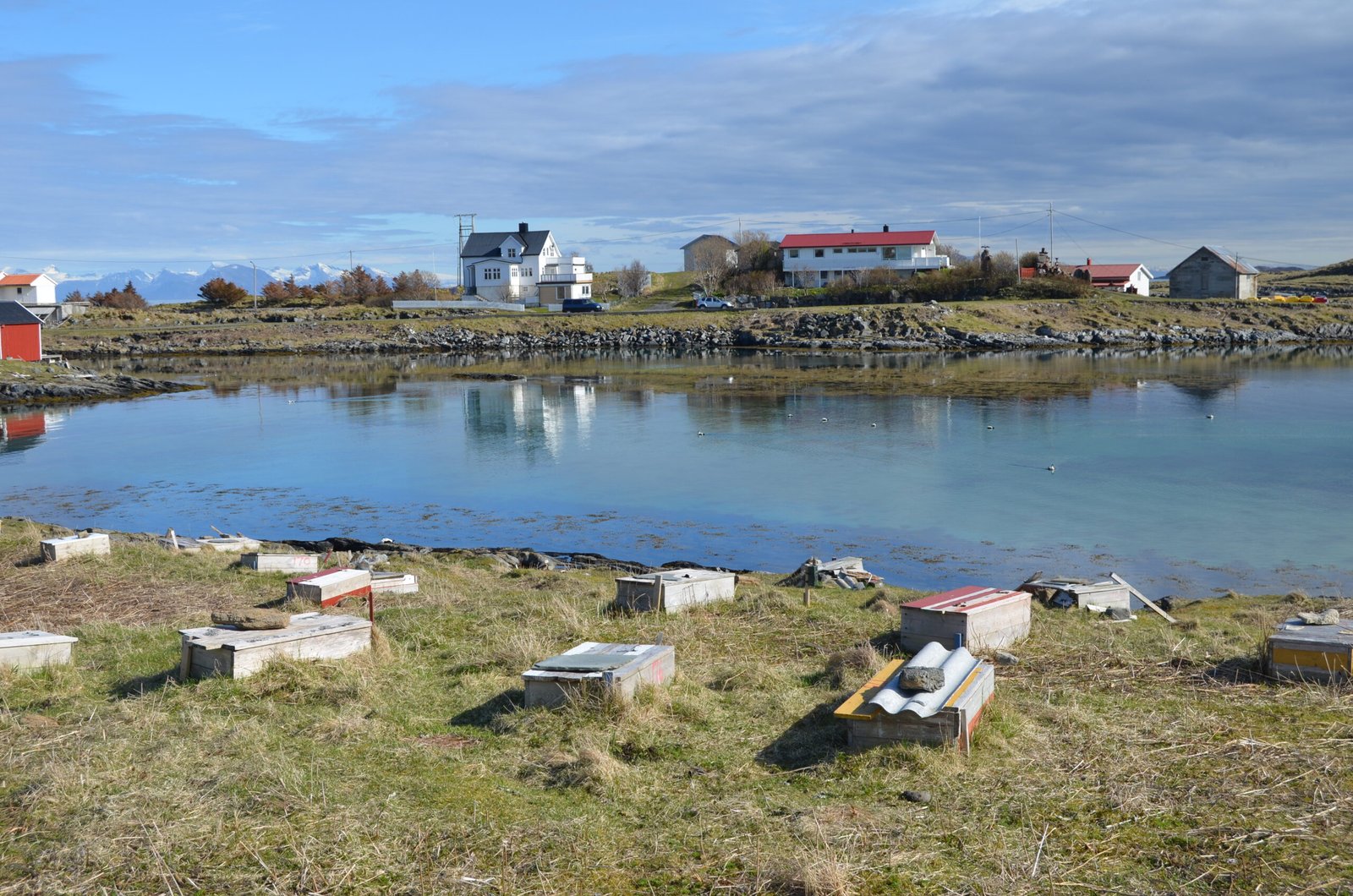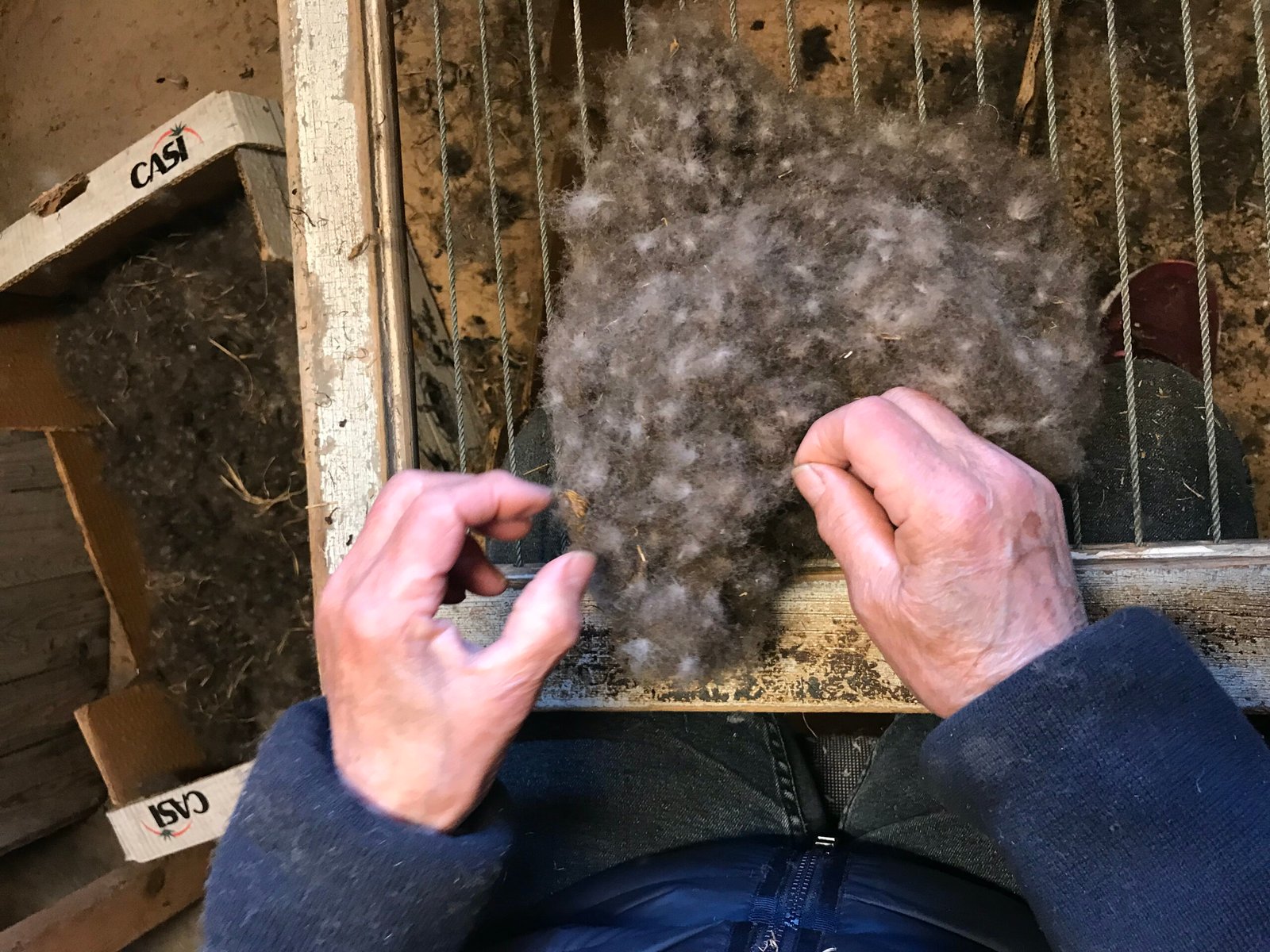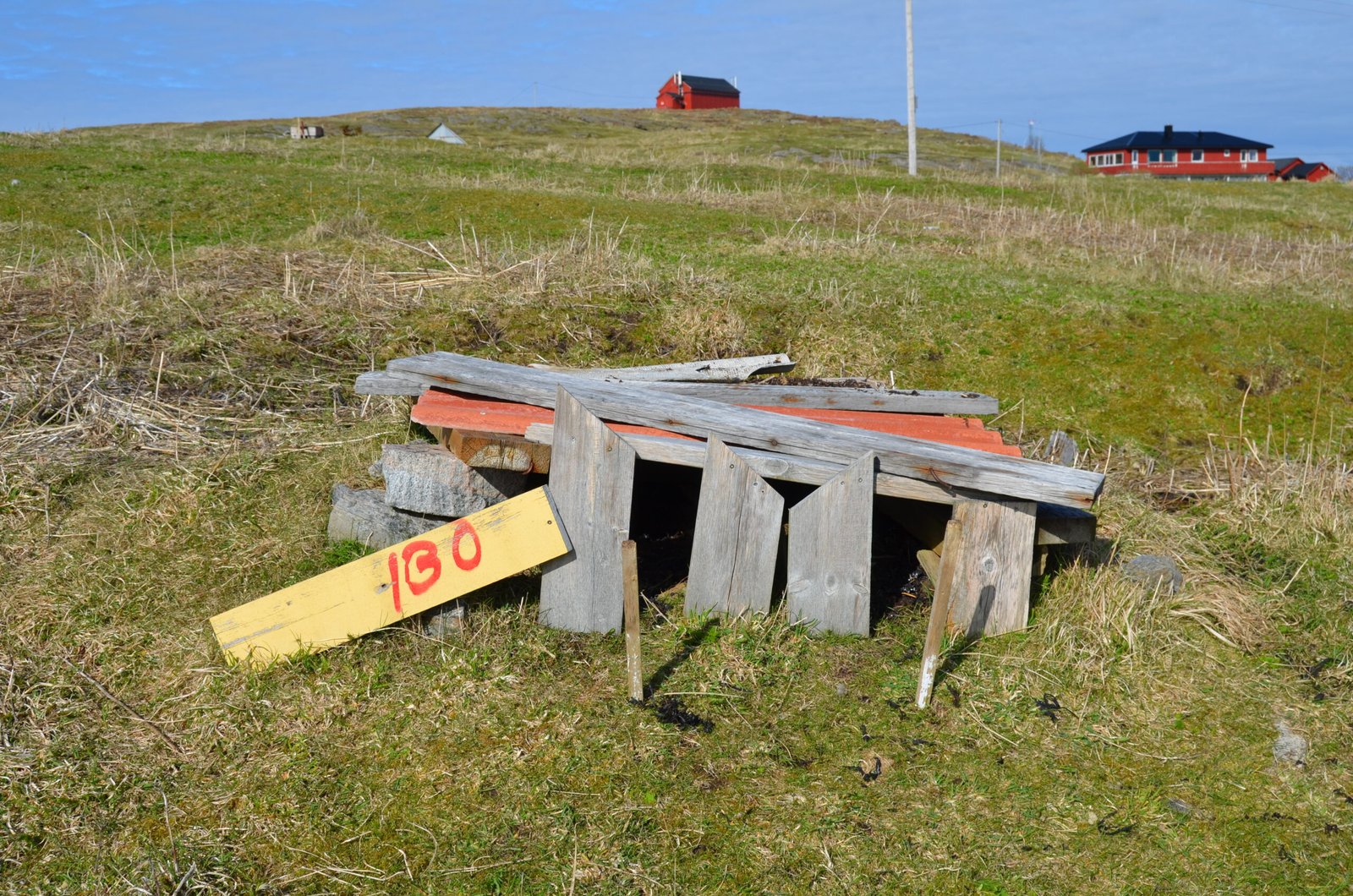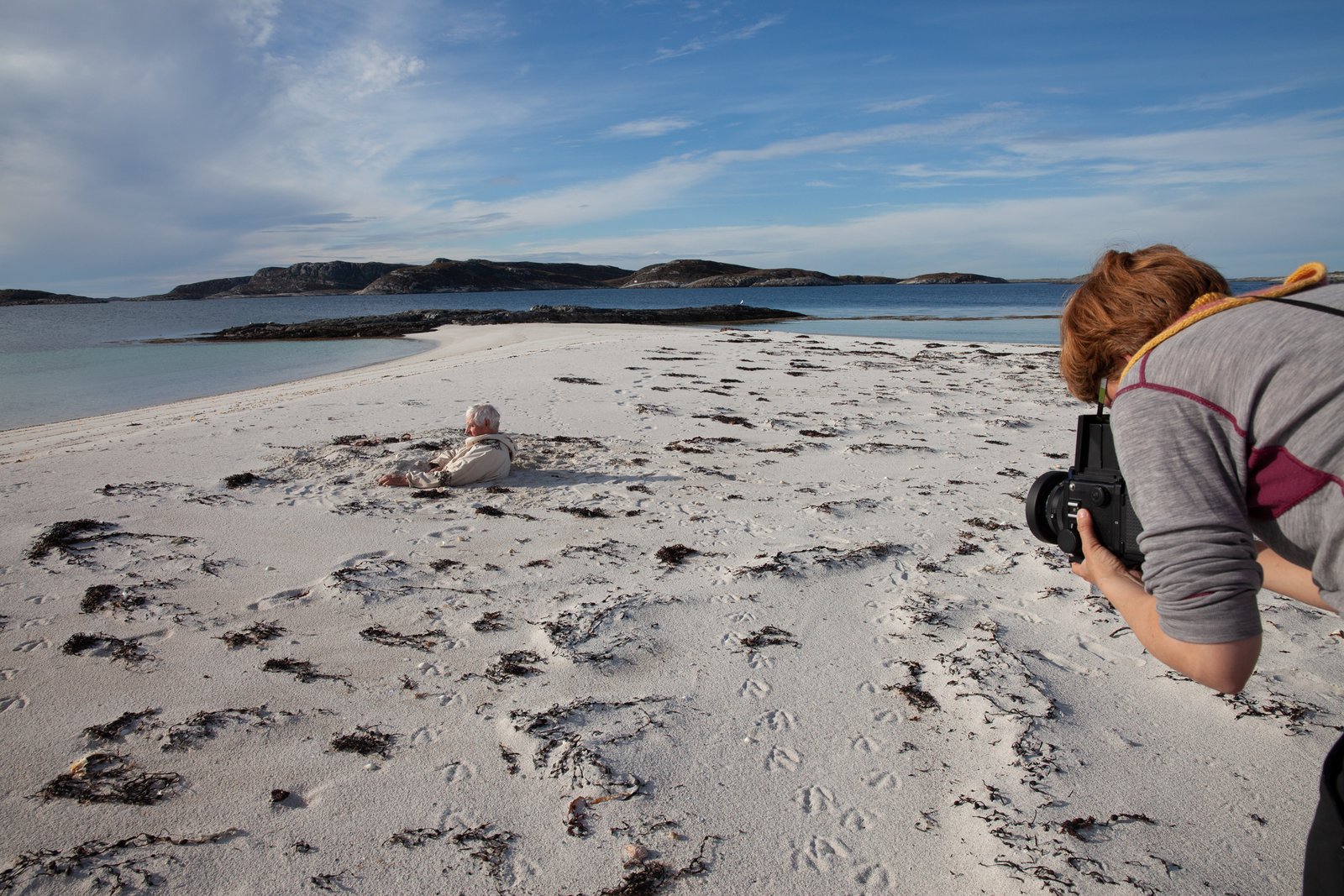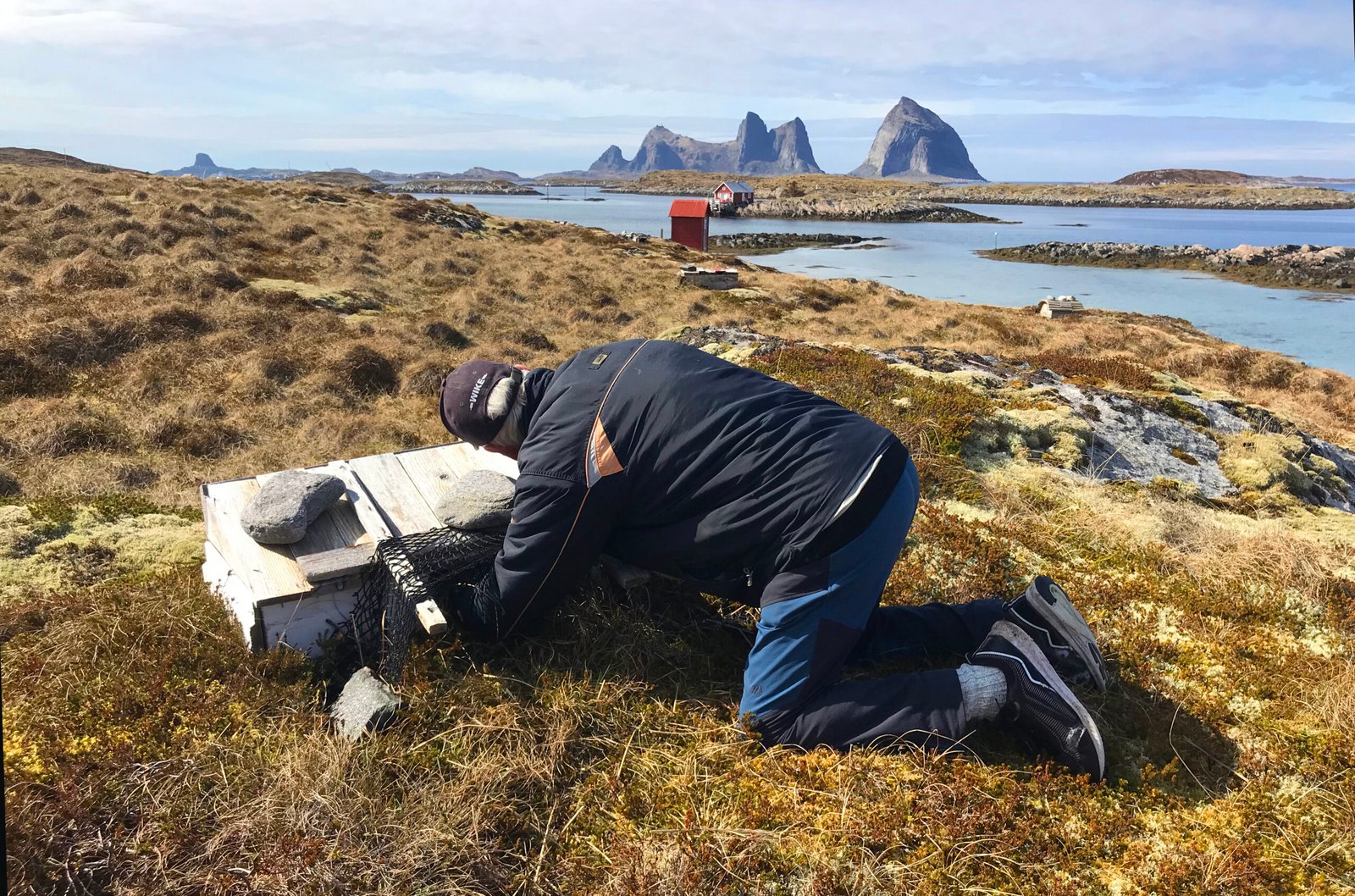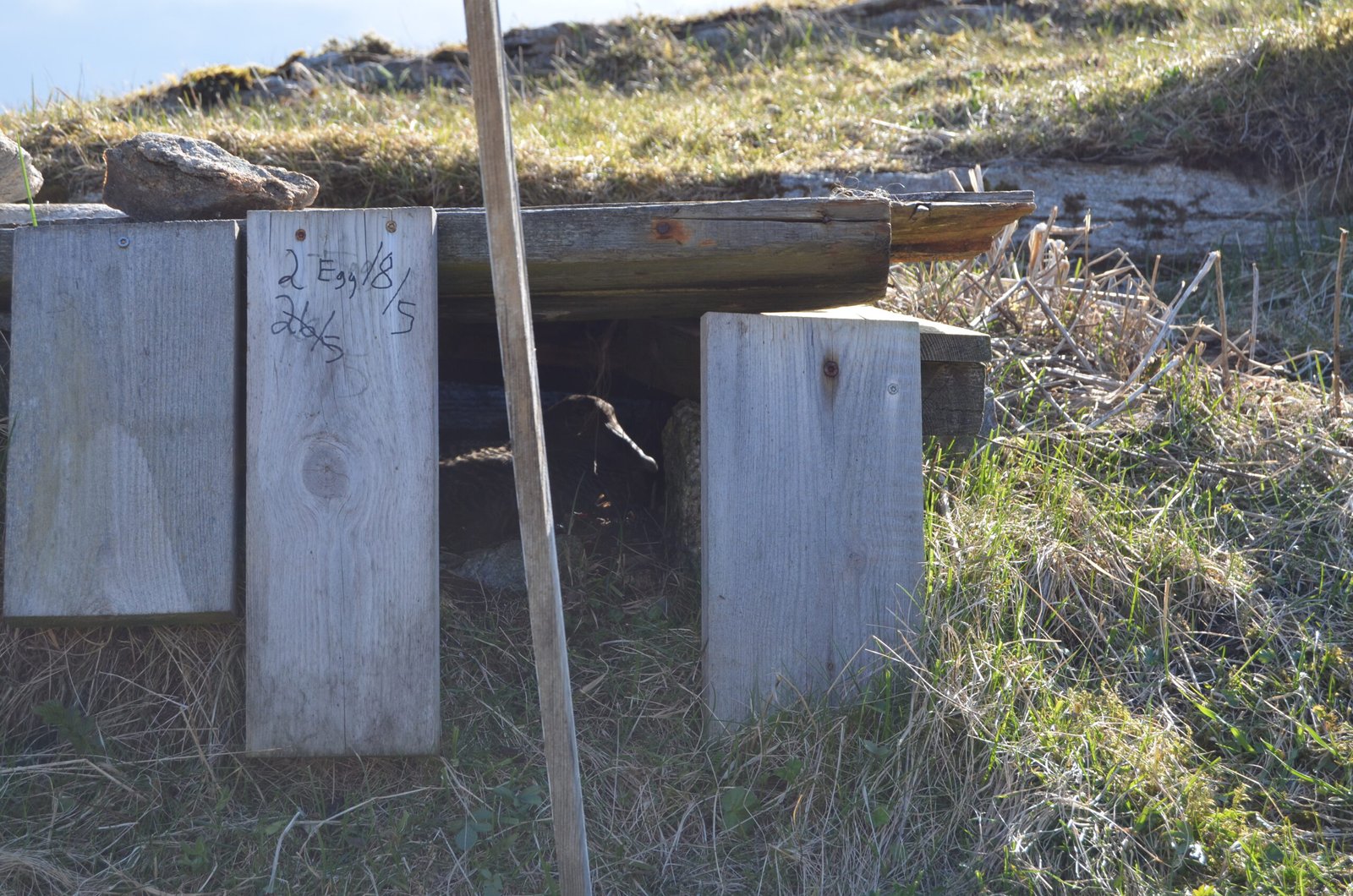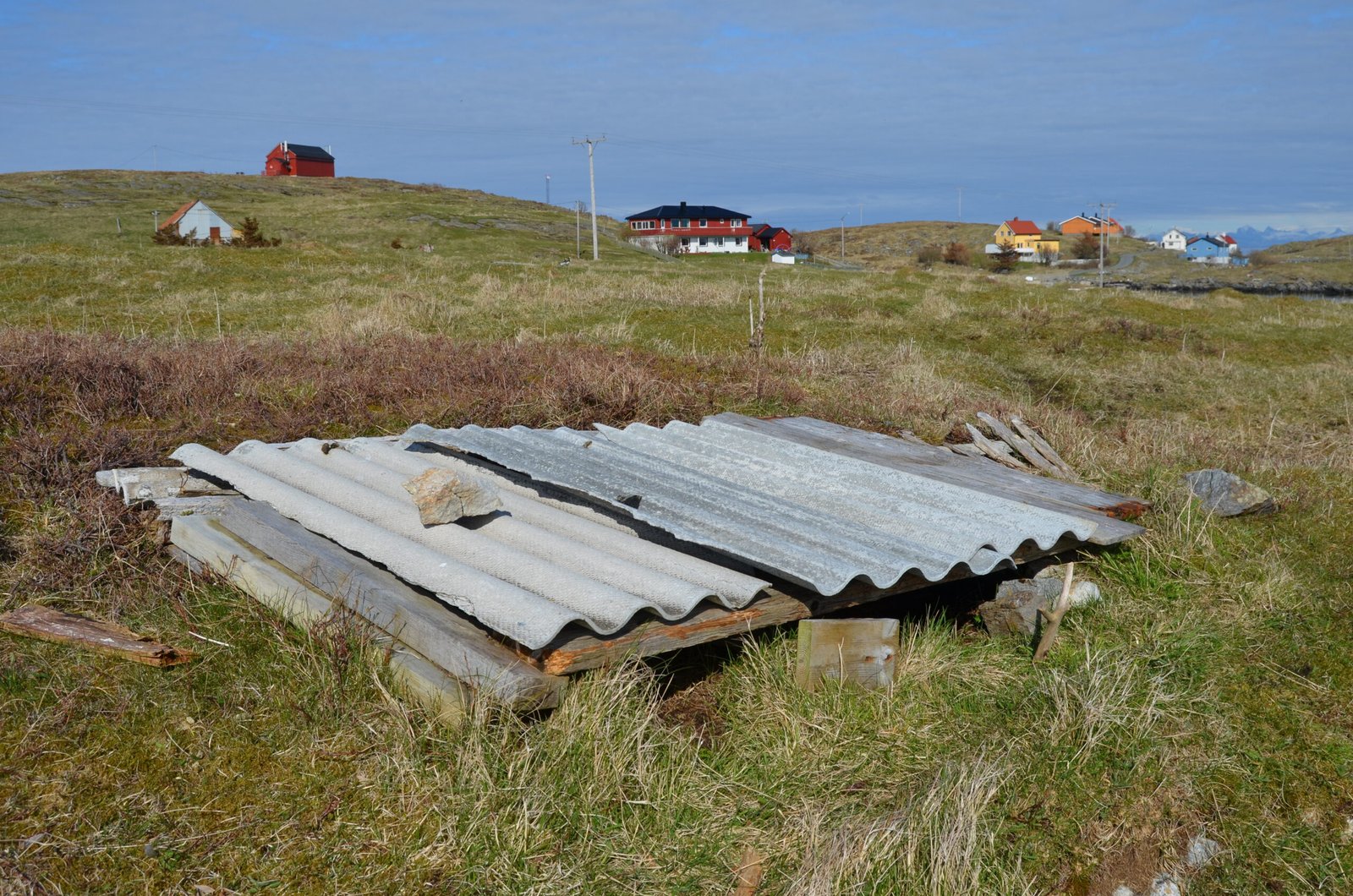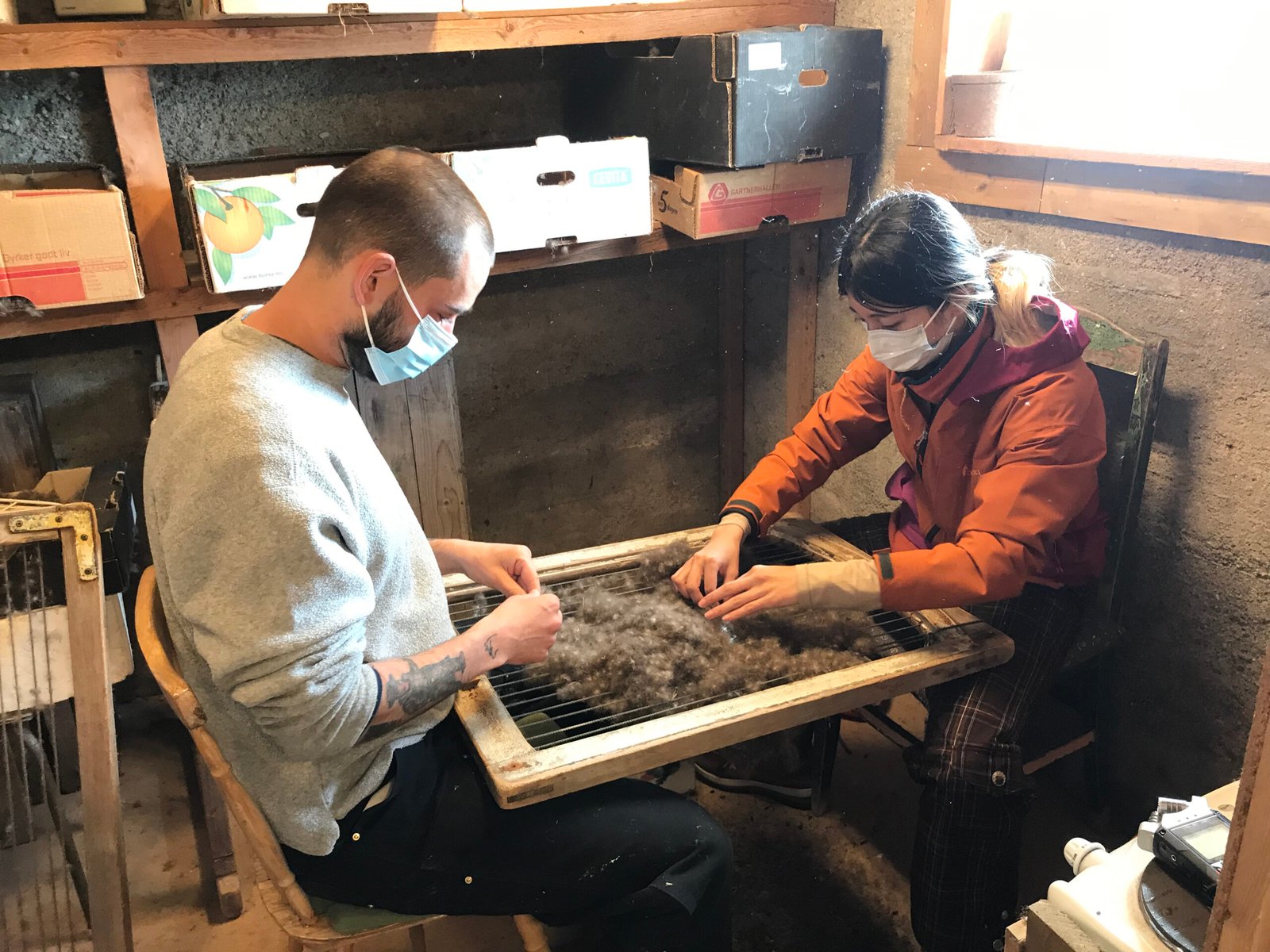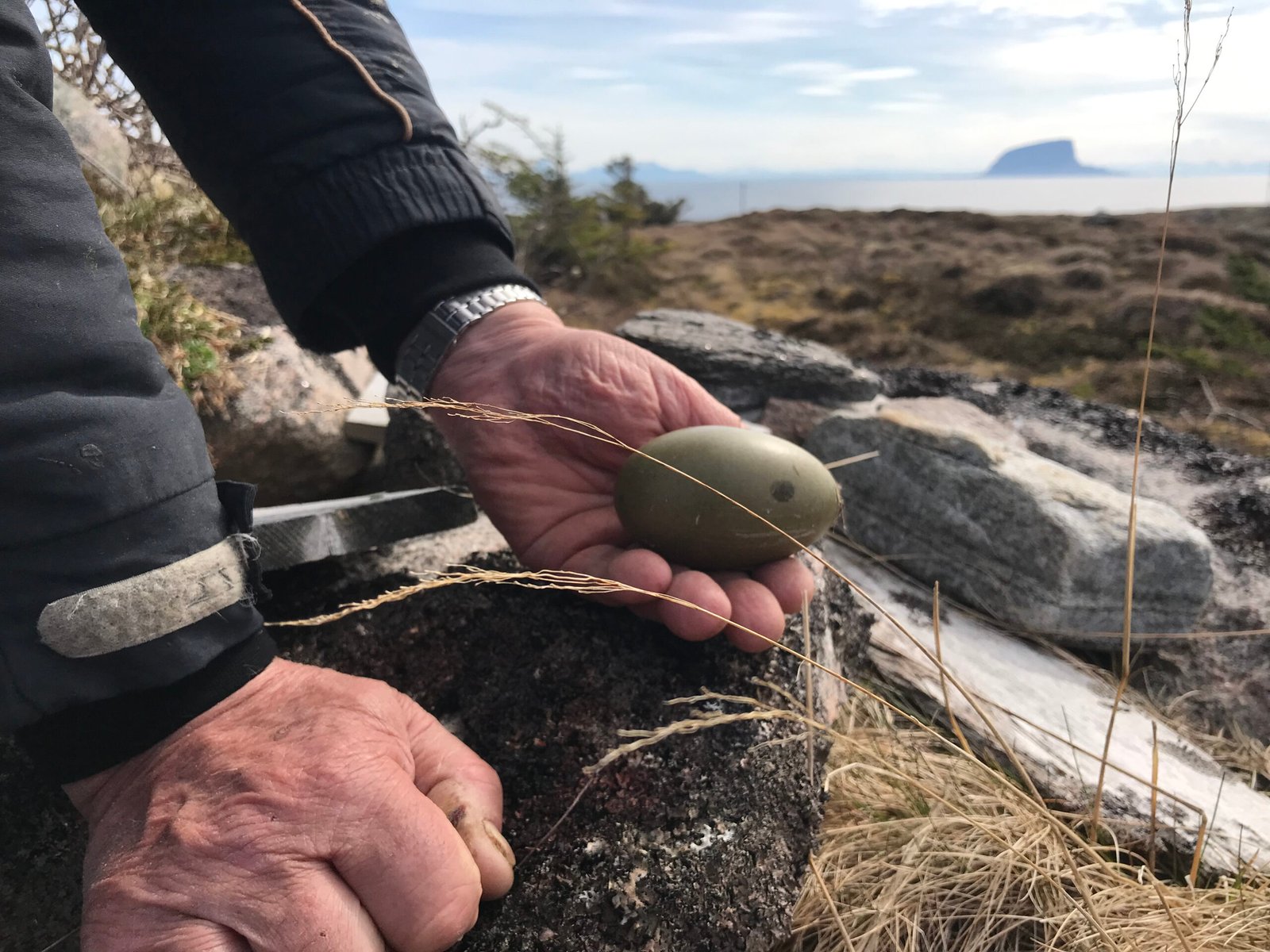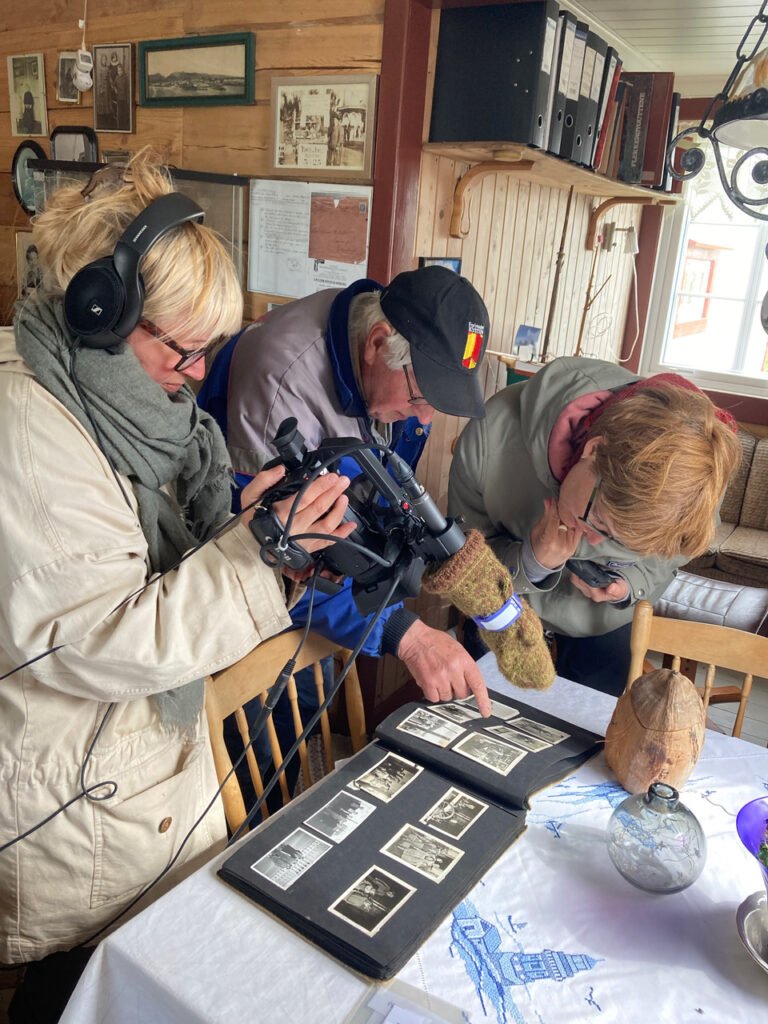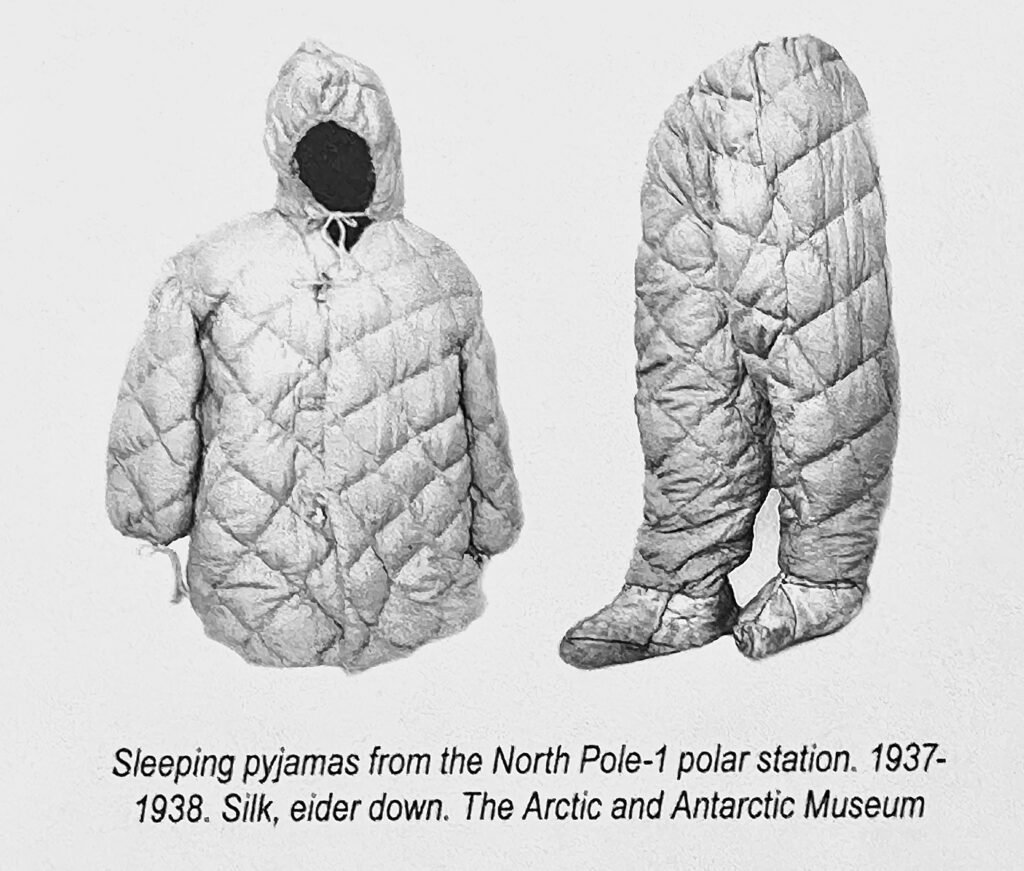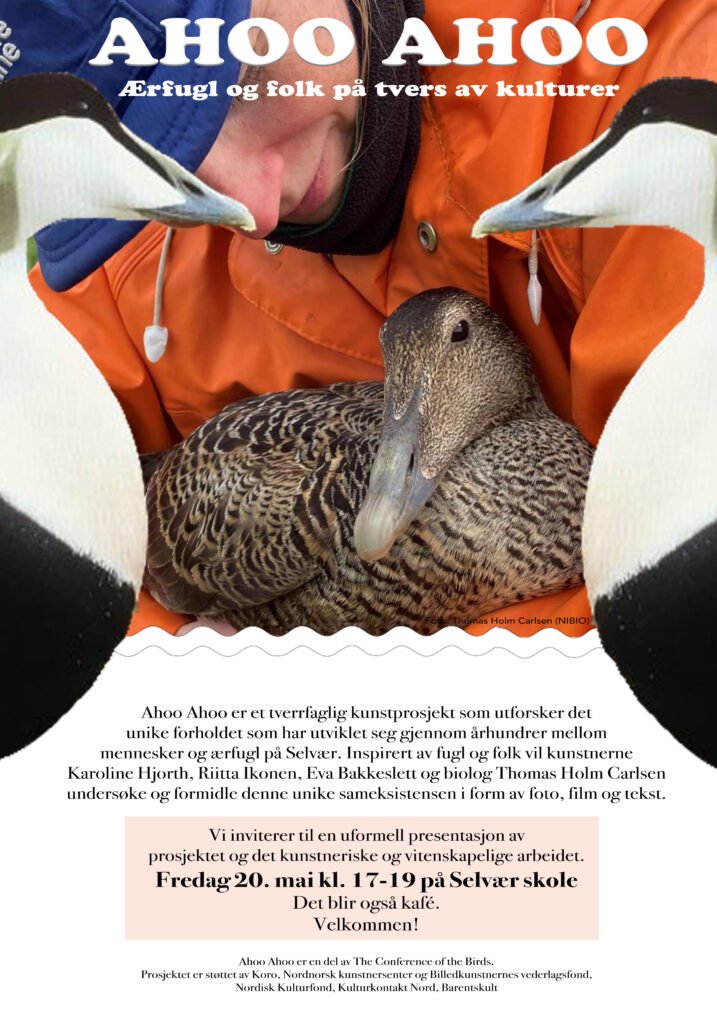Norway Nest: Ahoo Ahoo – Eiderducks and people exchanging cultures
Ahoo Ahoo is the title of the Norwegian Conference of the Birds Nest, named after the enchanting sounds of broody male eider ducks. In the spring breeding season their call deluge the island shores like a mighty choir in the Træna archipelago on the coast of North Norway. For centuries islanders have tended the eider ducks while they’re nesting and hatching their eggs, receiving eiderdown in return as a gift from the birds. Ahoo Ahoo is celebrating this deeply rooted kinship between humans and birds, exchanging cultures whilst immersed together in this marvellous yet unforgiving environment.
The Artworks
The artwork consists of a series of photographic and sculptural portraits by the artist duo Eyes as Big as Plates, aka Karoline Hjorth (No) and Riitta Ikonen (Fi/US) Eva Bakkeslett has made a poetic documentary film, a sculptural eider down suit and established the socially engaged project E-state agency, to communicate this interspecies tradition and recruit the much needed help for the eider carers. The works are results from two residencies on Selvær in May 2022 and 2023, initiated and curated by Eva Bakkeslett. In the team is also the biologist Thomas Holm Carlsen, who has been researching the eider ducks on these islands for 20 years. He introduced the artists to the eiders and other migrating birds and connected them to the eider carers Eivind Hansen and Jann Sandøy on Selvær and Sandøy and to Gerd Jakobsen, who is the only person left on the Træna islands who still cleans the down from the eiders nests.
The curator for this Nest is Eva Bakkeslett.
Eyes as Big as Plates
Artists Riitta Ikonen (FI/US) and Karoline Hjorth (NO)
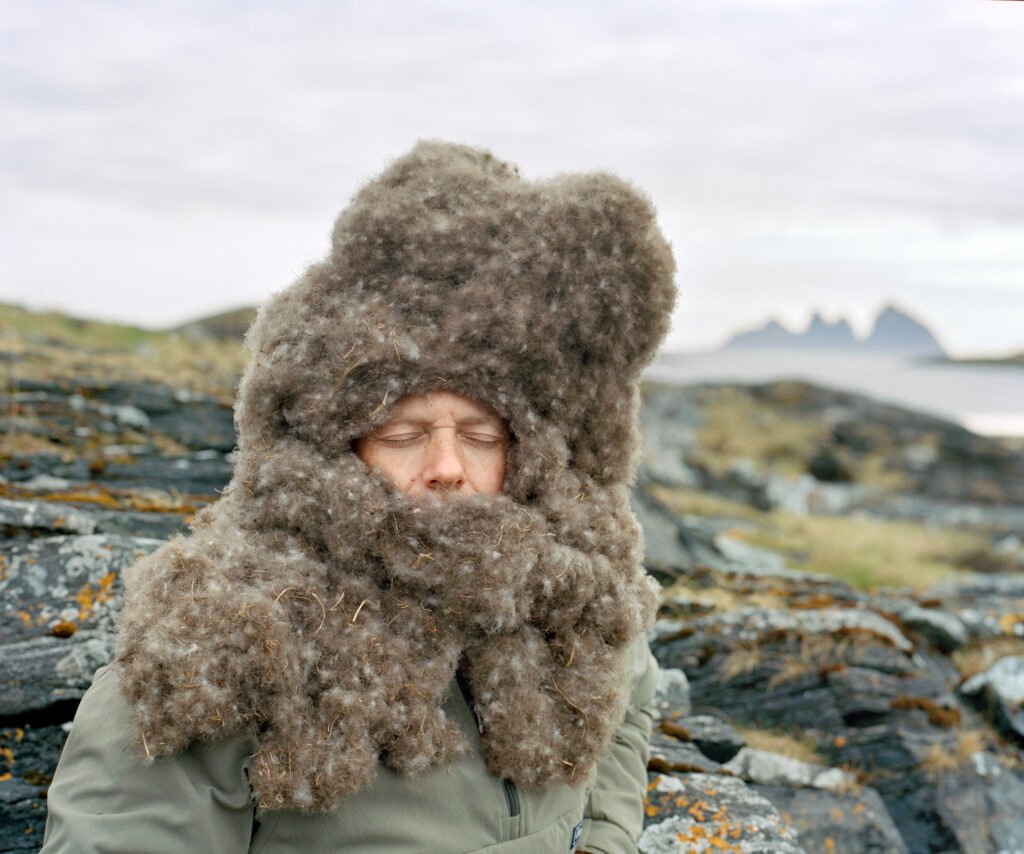
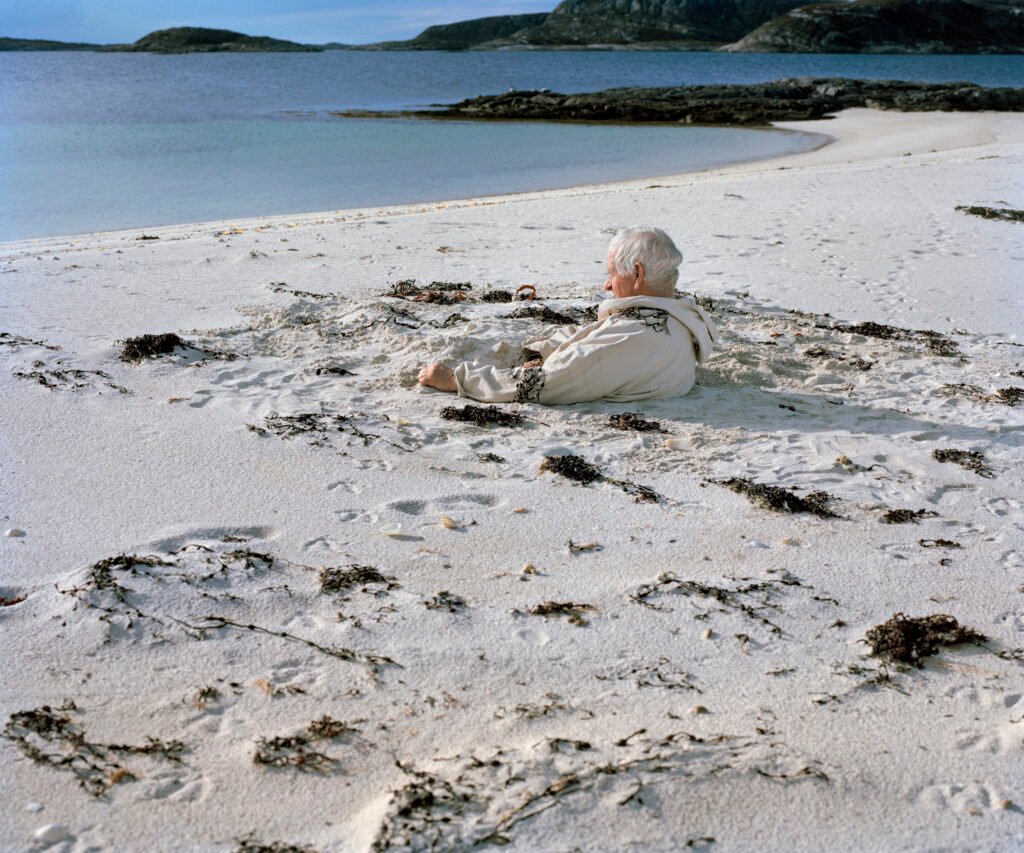

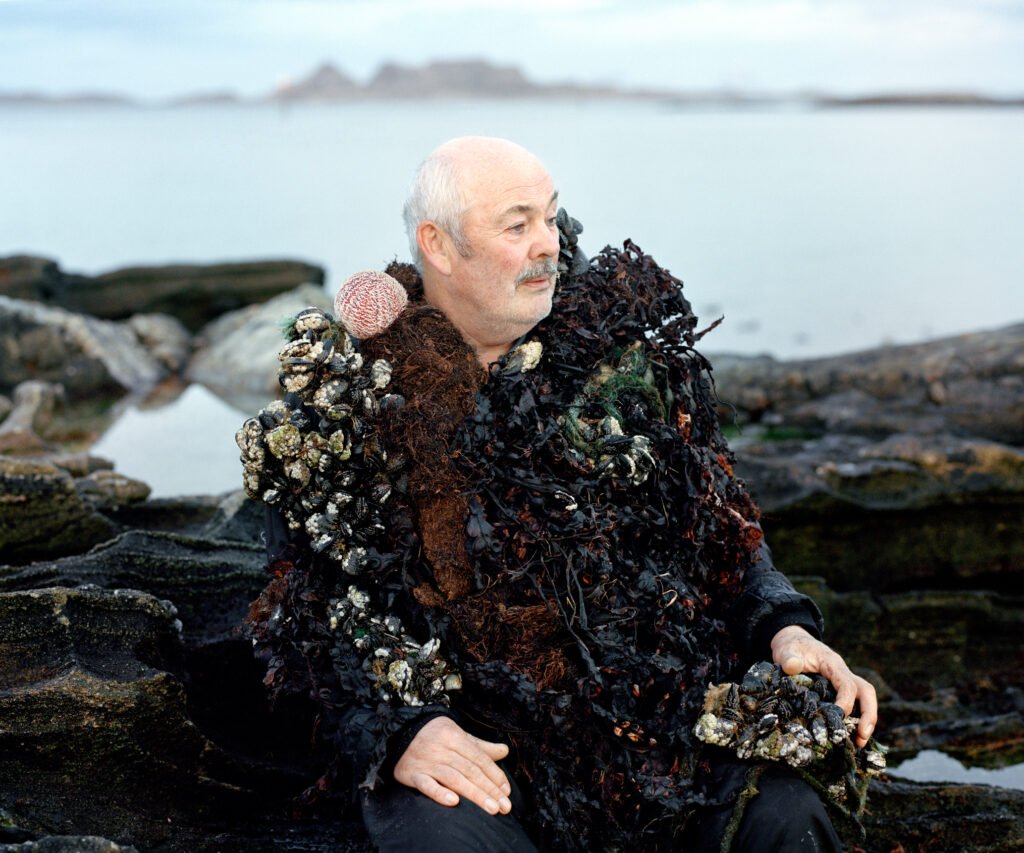
Eyes as Big as Plates, consisting of sculptor Riitta Ikonen (FI/US) and photographer Karoline Hjorth (NO), have been working with folkloric natural phenomena since 2011. Their work has evolved into a continuous search for modern man’s connection to nature. Combining art, science and activism, they often portray people engaged with the environment, exploring the potential of art to promote systemic change that can lead to action.
In 2020, Eva Bakkeslett invited the duo to participate in Ahoo Ahoo – The Conference of the Birds. In the spring of 2022, they finally made it to Træna after the Covid lockdowns, to explore the unique relationship and co-dependency between humans and birds on the islands. Thomas had provided them with plenty of background information beforehand so they could fully immerse themselves in the stories and marine materials surrounding and connecting the people and eider ducks. They spent ten days knee-high in eiderdown, waist-deep in seaweed, rolling on white sandy beaches and many of the islands’ basements, attics and kitchens, listening and learning from the locals and the eider ducks who were ‘aoooing’ their sweethearts day and night.
The work produced consists of a series of large scale photographs, combined with sculptural elements and objects of significance to each of the local participants. The bird carers have been “dressed” with materials connected with their relationship to the place and the eider ducks, and photographed in places close to the heart of themselves and the eiders on the island. There are five portraits of the eider-carers Eivind Hansen and Jann Sandøy, eiderdown cleaner and duvet maker Gerd Jakobsen, biologist and bird researcher Thomas H. Carlsen and islander Oddbjørg Pettersen. Riitta and Karoline also conducted interviews with the people portrayed, which have become the basis for the texts that accompany the portraits.
Exhibitions:
The portraits has so far been exhibited at Gyldenpris kunsthall 2024 and at The Conference of the Birds major exhibition at Österängen konsthall in 2024.
Ahoo Ahoo – the film
Artist Eva Bakkeslett
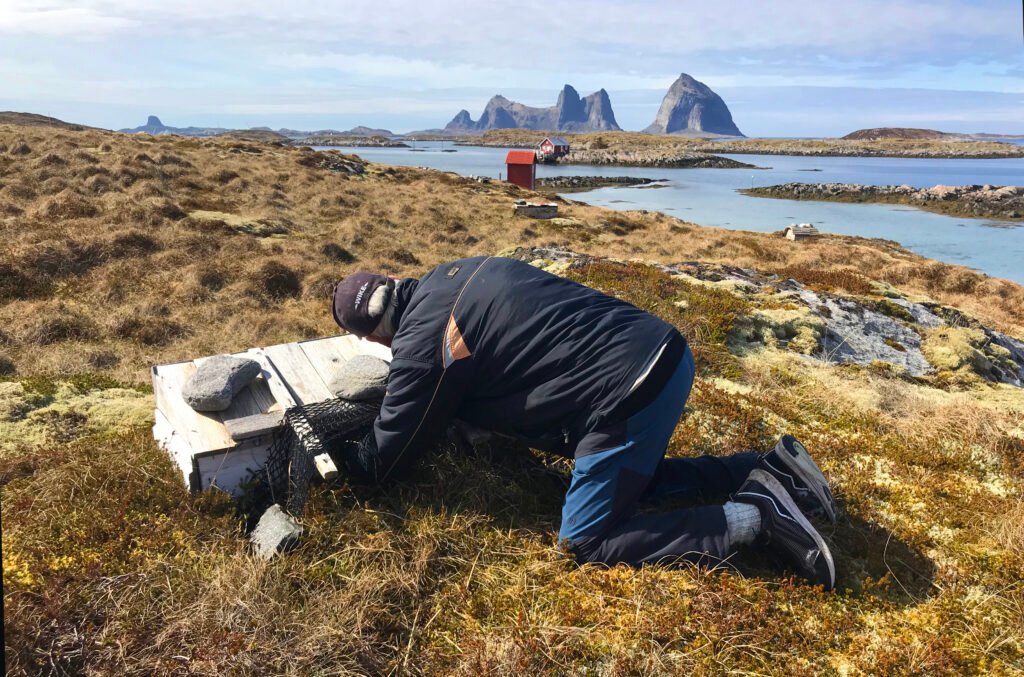
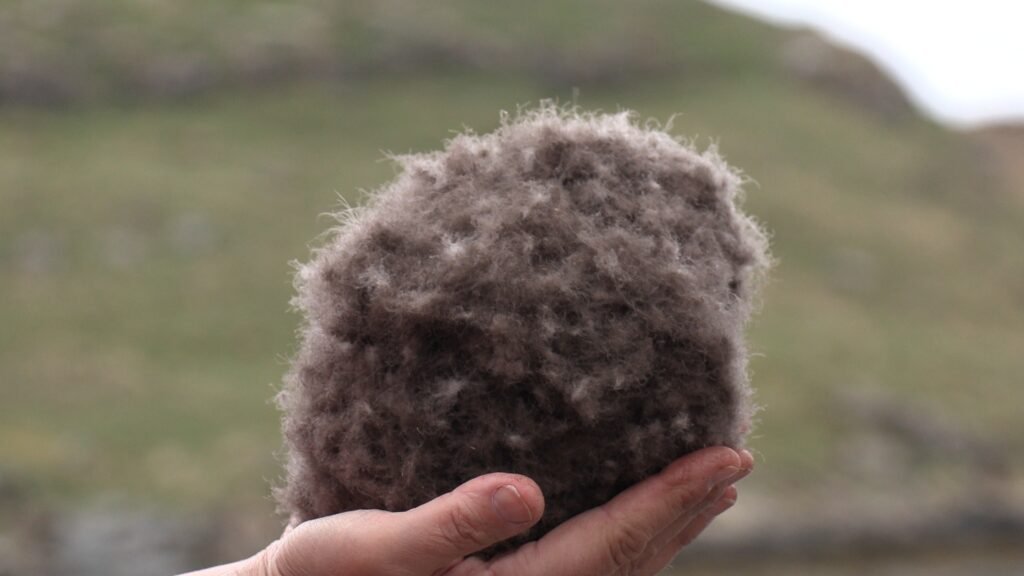
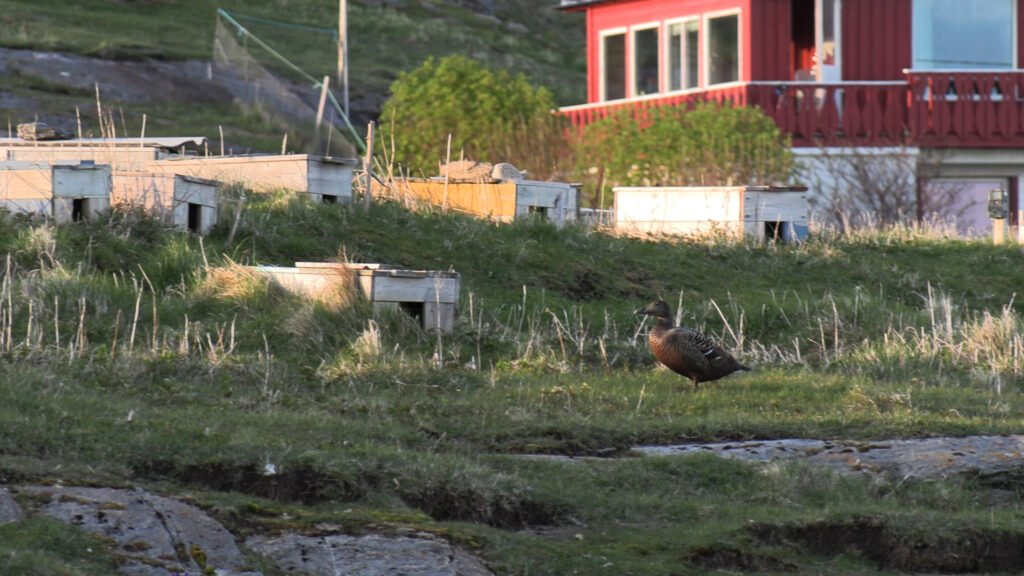
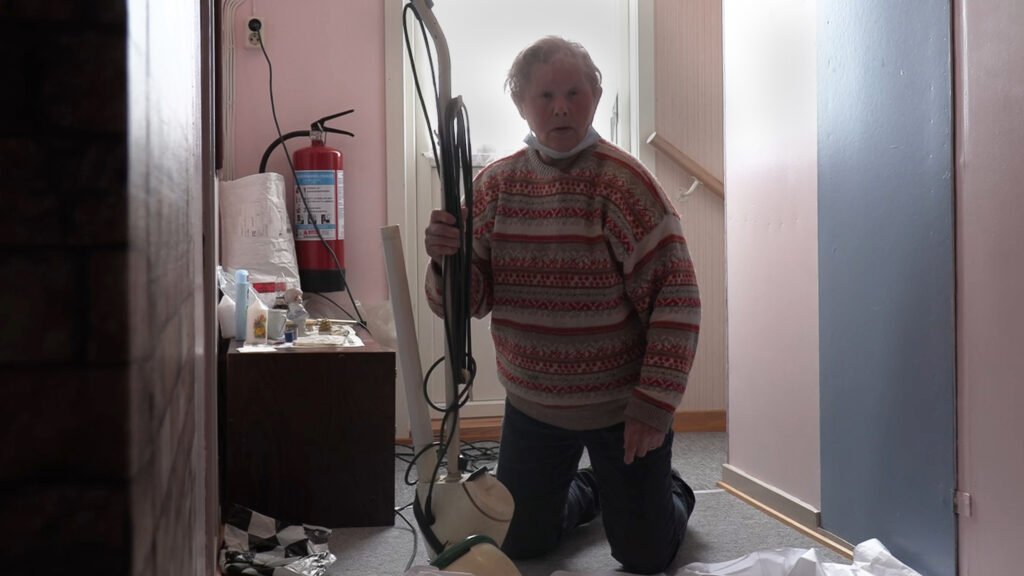
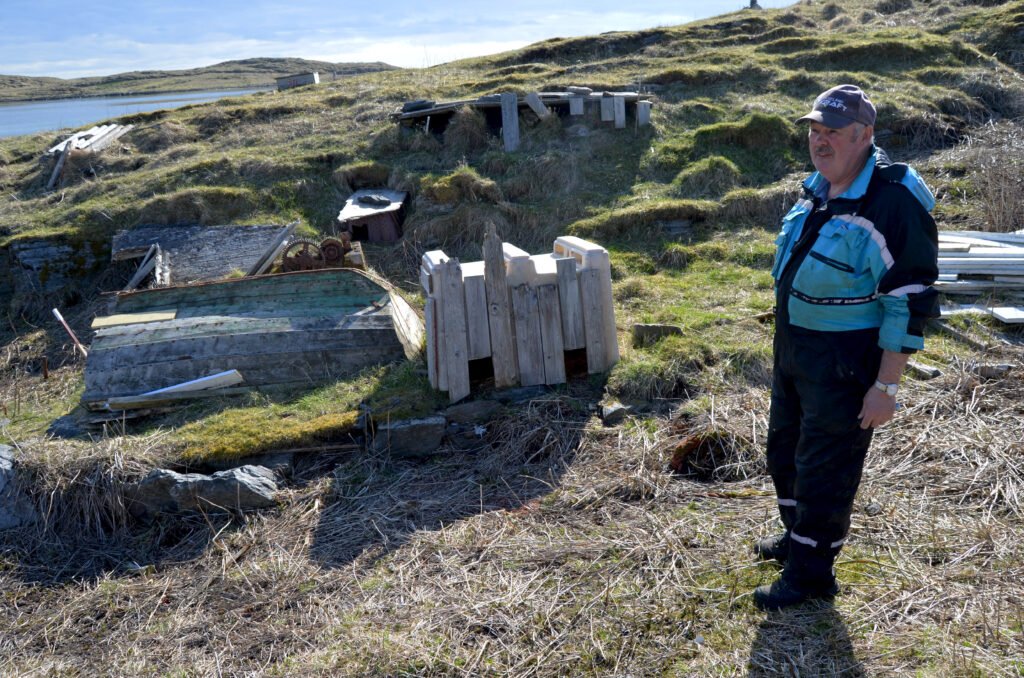
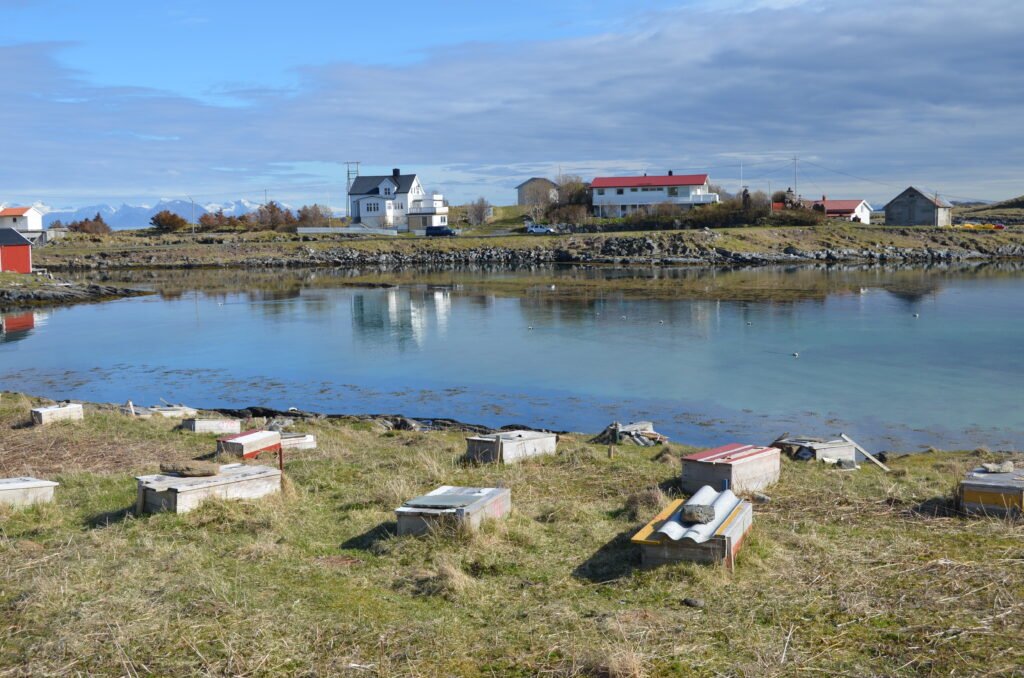
The artist and curator Eva Bakkeslett has made a poetic documentary exploring the communication and collaboration between humans and eider ducks on the islands. She immersed herself into this very old tradition that has been practiced for centuries along the coast of North Norway and throughout the whole of the Barents coastal region and beyond. In the Træna archipelago there is an unbroken tradition where people have been tending for the eider ducks in the breeding season. They are building houses for the birds and scaring off predators, receiving eiderdown in return when the chicks leave their nests. The birds and the humans have thus formed a strong and mutually beneficial partnership which is now on the verge of extinction, with only two eider tenders left on the islands and one eider down cleaner. Lack of food and other human interferences have also caused the numbers of eiders to plummet, bringing them onto the long list of endangered species. The eider tending is both beautiful and mindful and has all the ingredients that our present anthropocentric approach to “harvesting” from nature lacks. The film also honours the myriad of other wild birds who are temporary residents on the islands, and the amazing eiderdown that is gifted to its carers have a strong presence in the film.
Director and producer: Eva Bakkeslett
Camera: Olav. T. Søla and Eva Bakkeslett
Editing: Astrid Ardagh and Eva Bakkeslett
Sound direction: Aurora Sound – Rune Hansen
Colour correction: Cue – Cato Lauvli
HD Video, 20min
Exhibitions:
- The Conference of the Birds major exhibition at Österängen konsthall in 2024.
- Singing as numerous as space, measureless as noon, Museum of Fine Arts, Liberec, Czech, 2024/25
- Den Nordnorske Kunstutstilling touring galleries throughout North Norway in 2025.
I-the duck /Æ ea
Artist Eva Bakkeslett
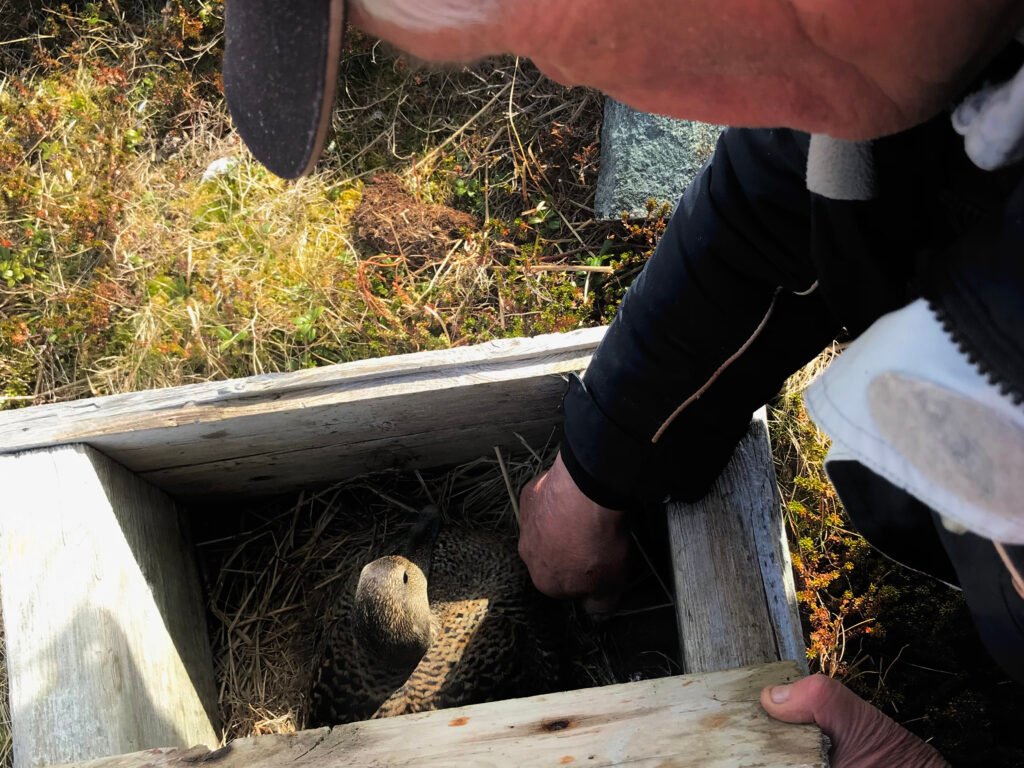
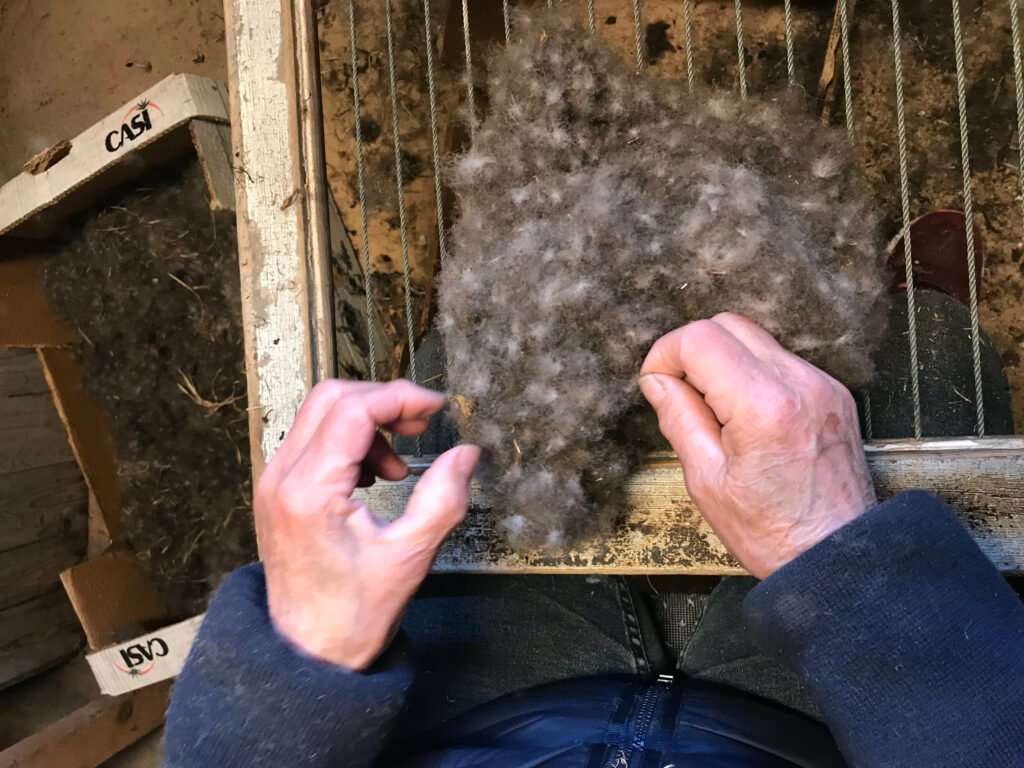

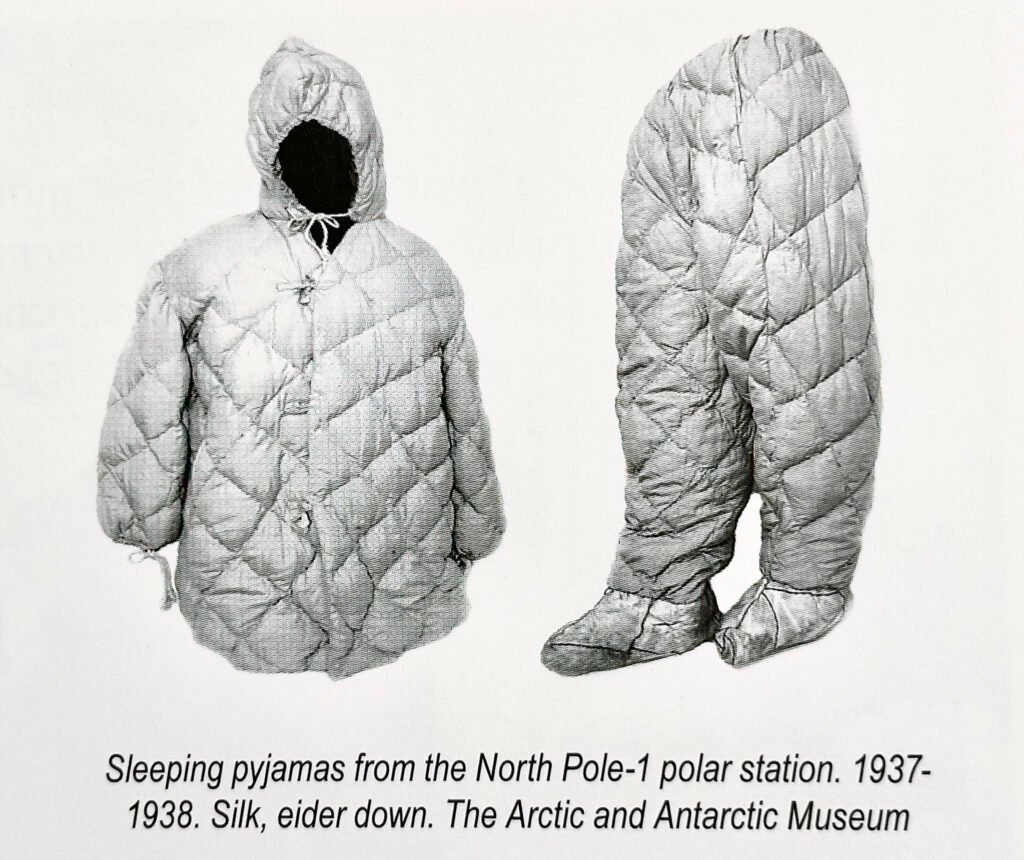

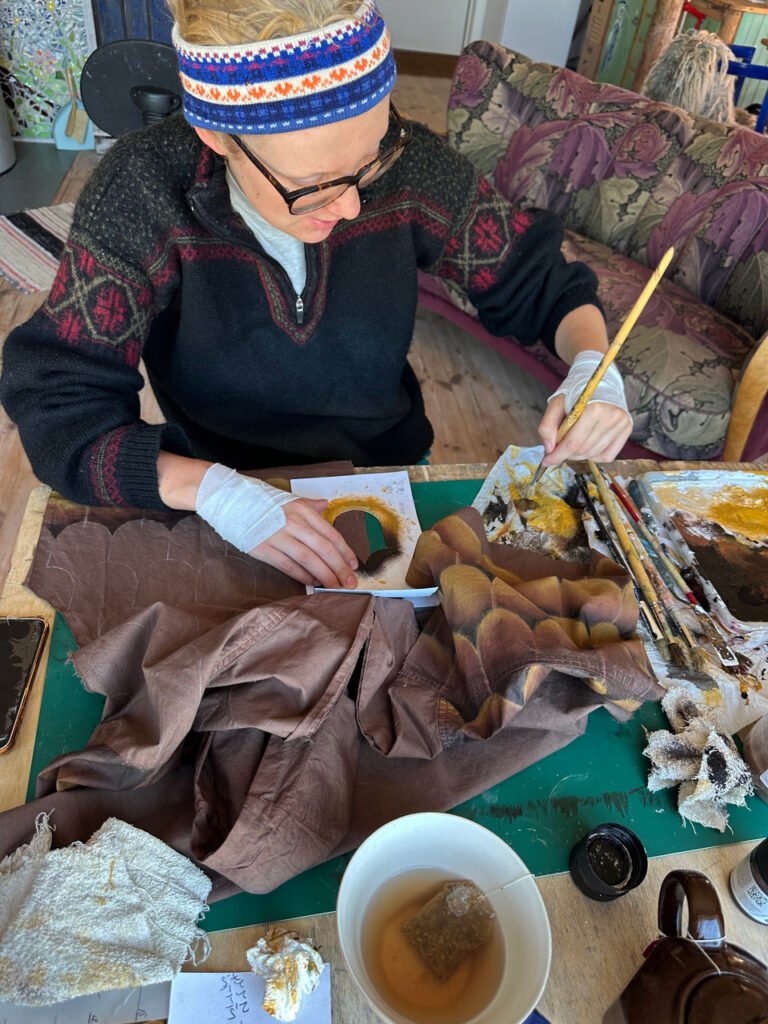

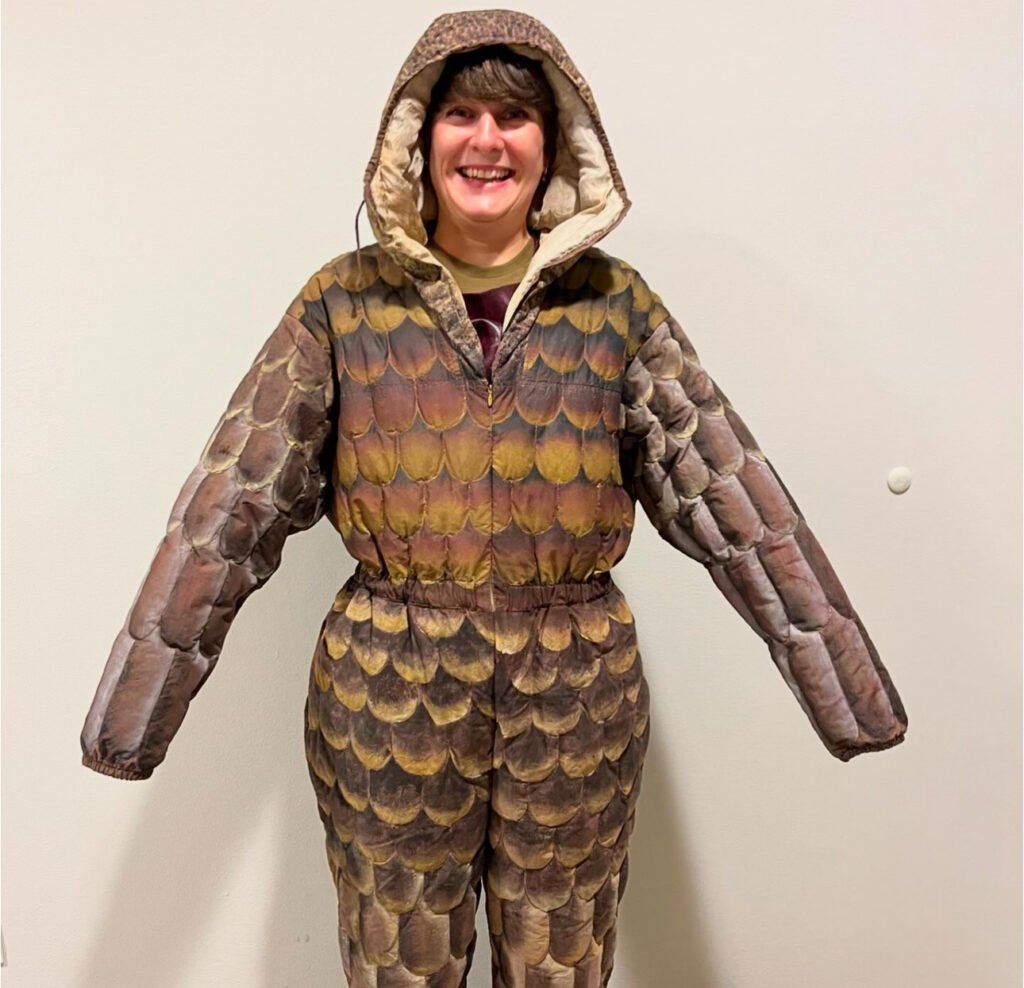
During her stay in Selvær, Eva Bakkeslett developed a passion for eider ducks and their miraculous down, carefully plucked by the eider mother from her chest to line the nest. The eiderdown has truly magical qualities. There’s no coincidence that it was found in the Oseberg Viking ship! People have cherished its properties for centuries. It is almost weightless but still has the ability to receive and emit heat like a battery, to keep you warm even on freezing winter days.
Whilst learning to clean the precious eider down by Gerd, Eva became enchanted by its magic which inspired a desire to become an eider herself. This was the beginning of Æ Ea or I The Duck, an eider suit filled with hand-cleaned eiderdown from Selvær and the surrounding islands. The design of the suit is inspired by the pyjamas made for the Russian North Pole expedition in 1937-8. The suit is made from cotton duck lined with silk and hand-dyed with stone lichen, carefully picked from boulders by the seashore. The suit was then painted with eider-like plumage and laboriously filled with hand-cleaned eiderdown and finally sewn together, feather by feather. The suit is a sculptural work that will also form part of site-specific and meditative experiences during exhibitions.
Eiderdown was donated from the eider ducks to their eider carers Eivind Hansen and Jann Sandøy on Selvær and Sandøy and then gifted to down cleaner Gerd Jakobsen in Selvær who donated it to the artwork. Down was also generously gifted by Lillian Evertsen at Flovær outside Vega and bought from Olaug Olsen in Givær.
Size: 38-46 (1.55cm length)
Exhibitions:
- The Conference of the Birds major exhibition at Österängen konsthall in 2024.
- Singing as numerous as space, measureless as noon, Museum of Fine Arts, Liberec, Czech, 2024/25
The making of I the Duck
A short video following the process of the making of I the duck (Æ ea) suit.
Camera: Eva Bakkeslett, Izzy Watts, Barbara Chauvet, Astrid Ardagh, Video edit: Annie Purnell
E-state Agency (E-hus formidlingen)
Artist Eva Bakkeslett
Eva Bakkeslett has initiated the socially engaged project E-state agency that connects the eider duck carers with potential volunteers. The carers themselves are now getting old and are in need of help with some of the labour intensive jobs involved in the maintenance and preparation of the eider duck houses. The only down cleaner on the island, Gerd, also needs help with this very time consuming but beautiful job.
An important part of the E-state agency is to safeguard, communicate and spread this ancient tradition and connect with people who are wanting to come and learn and help in order to keep the tradition alive. The agency will connect, organise and potentially fund the volunteer program and also be an information base about this work. This is an ongoing project, rooted in the Conference of the Birds, but in time aiming to become an independent organisation run by the islanders.
The E-state agency had its first volunteers in 2023, Jake and Nao, who were both art-students at the Pratts School of Arts in New York. They helped with collecting and drying seaweed for next years houses. They also helped mending houses that had been damaged during the winter and lined them with dried and smouldered seaweed. They also made a couple of new houses, one a copy of Eivinds house.
In 2024 the Hjorth-Bredeveien family spent ten ridiculously sunny days in May at Selvær in the best company, including wild sheep, woolly pigs, snipes, E-king eider keeper Eivind and an unknown number of flea bites. Their stay made such an impression on young and old that they are hoping for a repeat it in the summer of 2025!
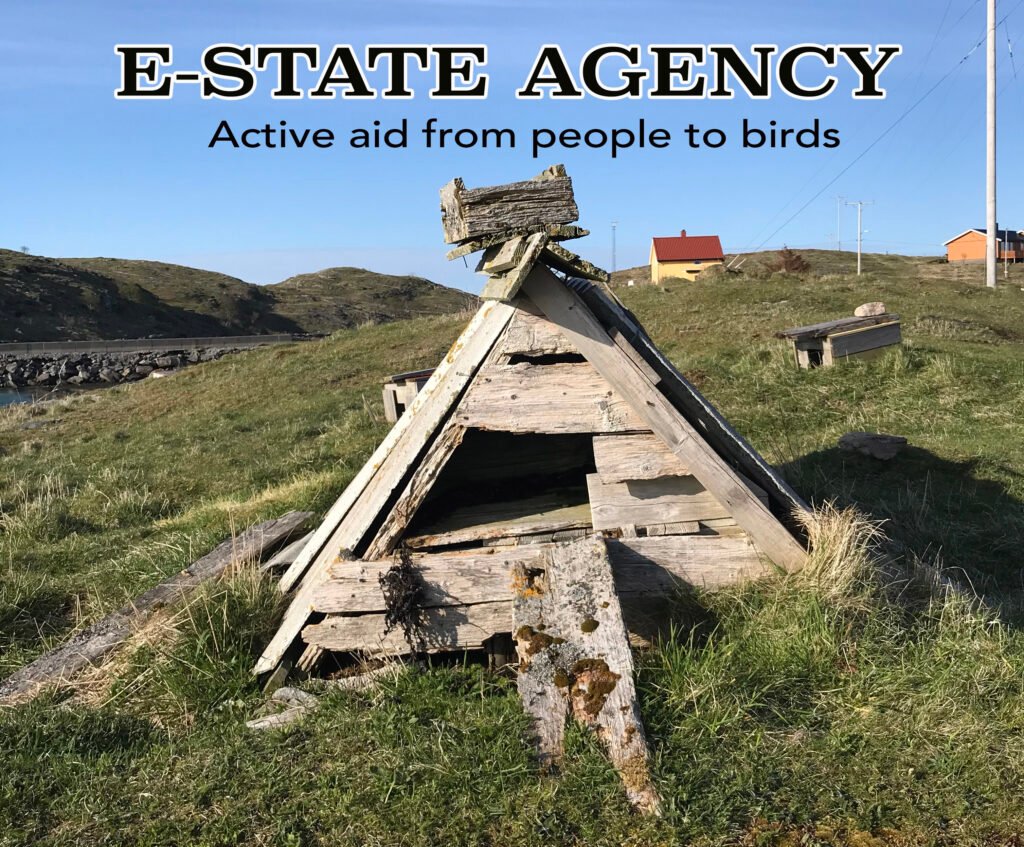
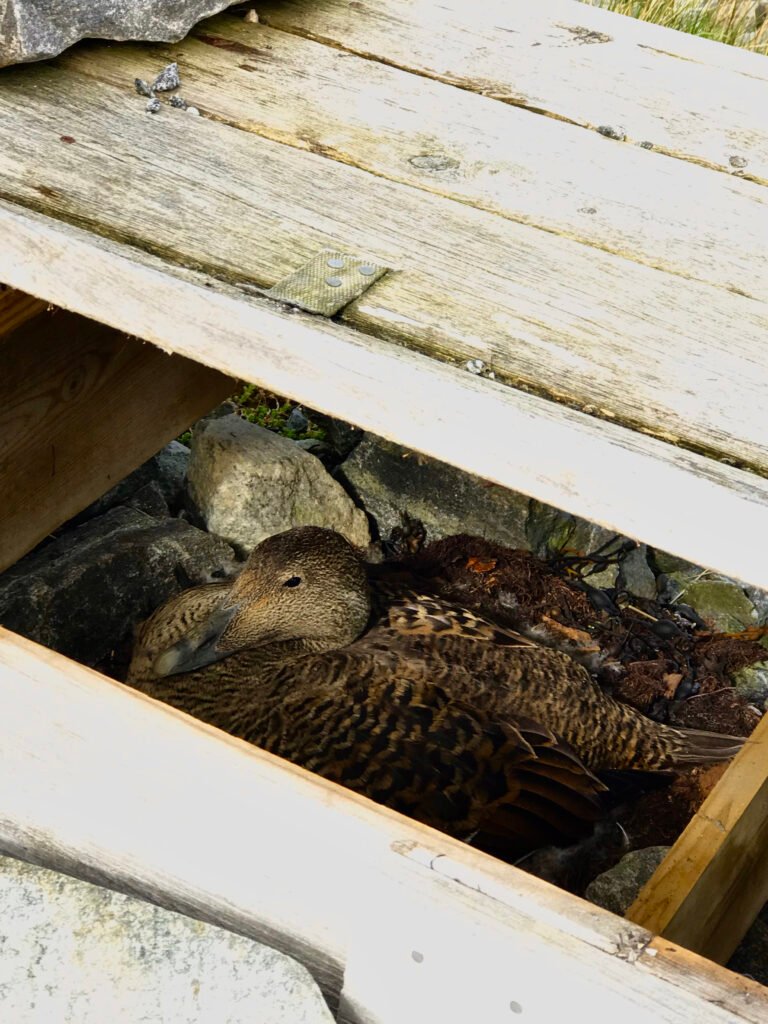
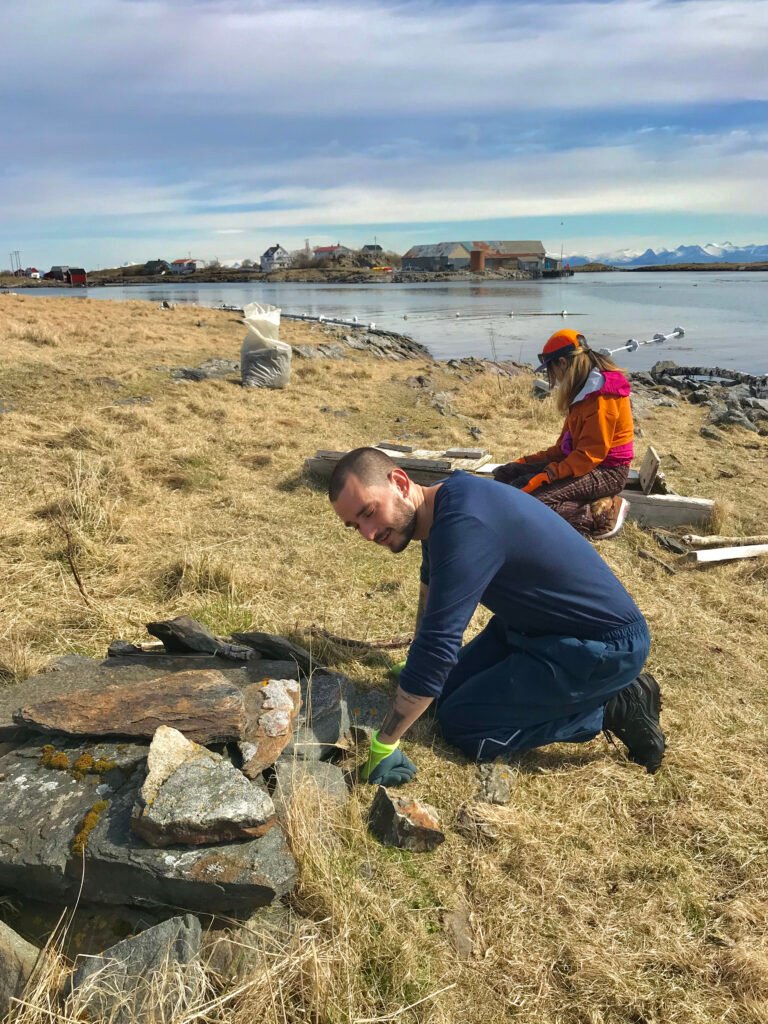
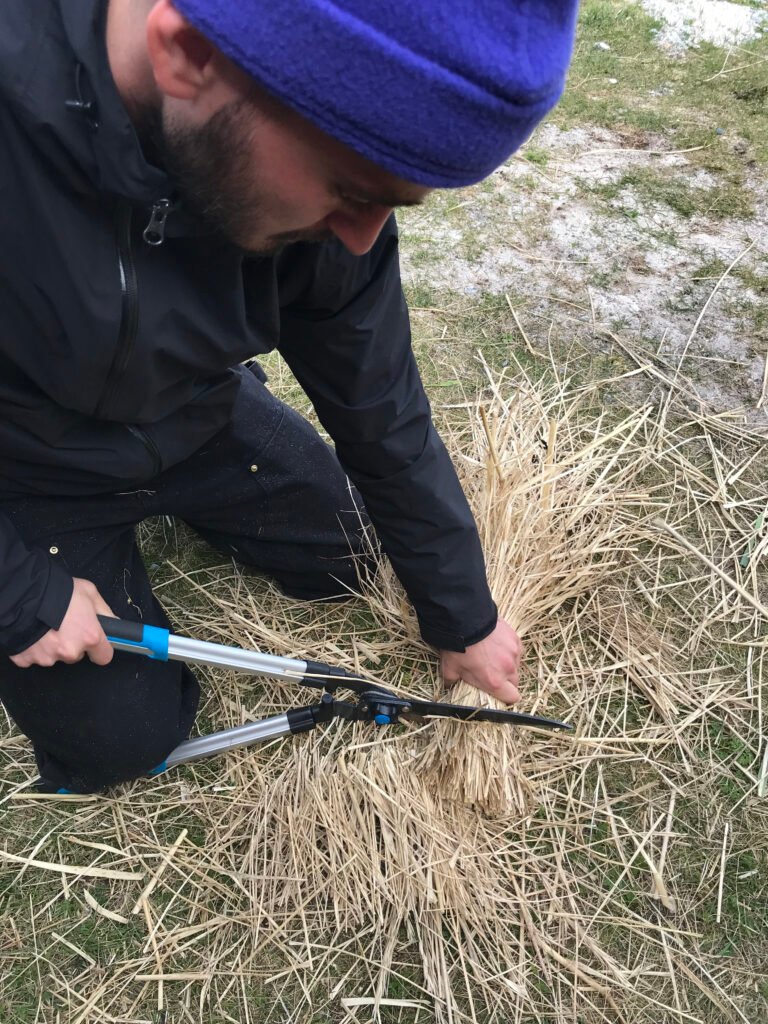
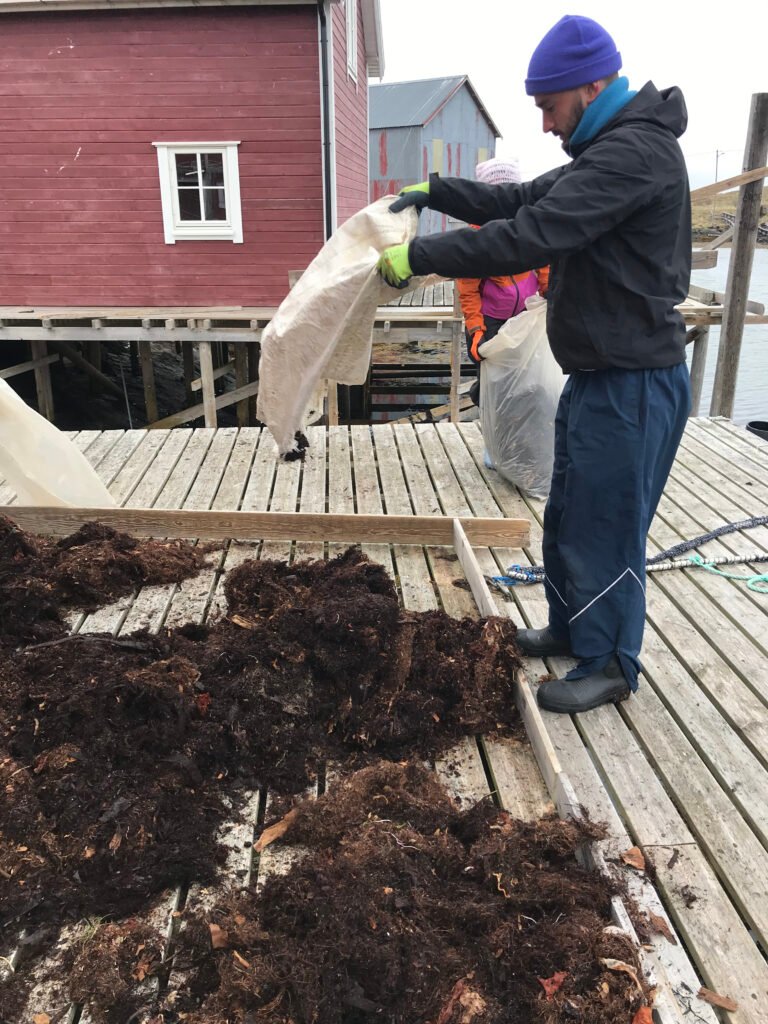
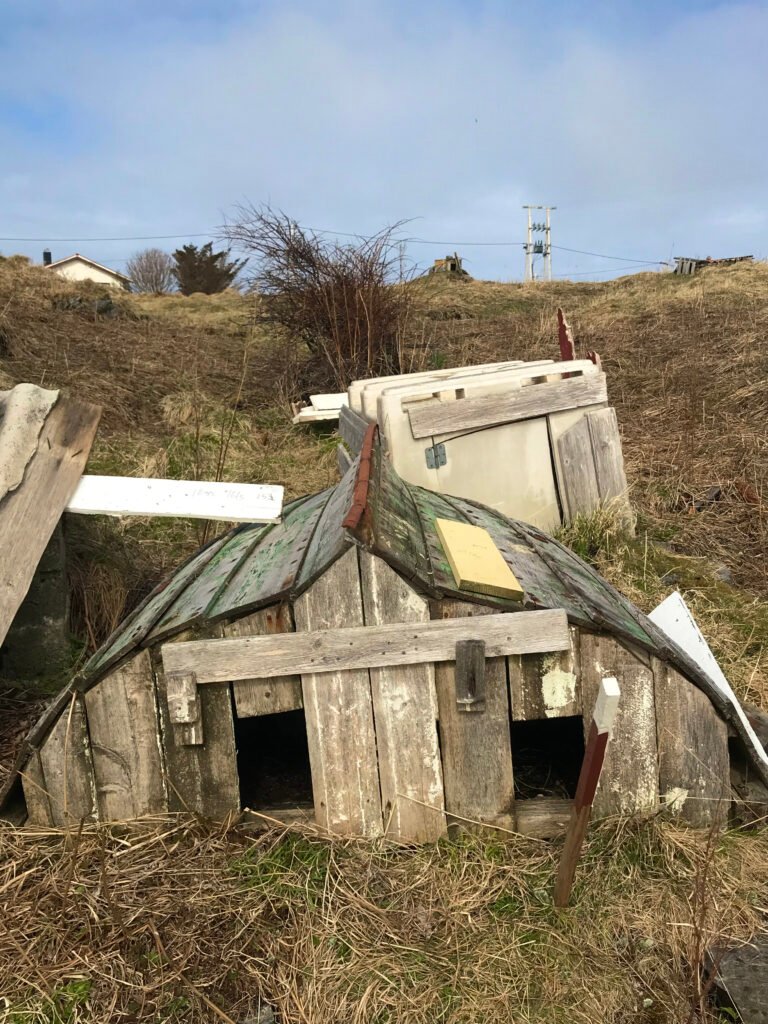
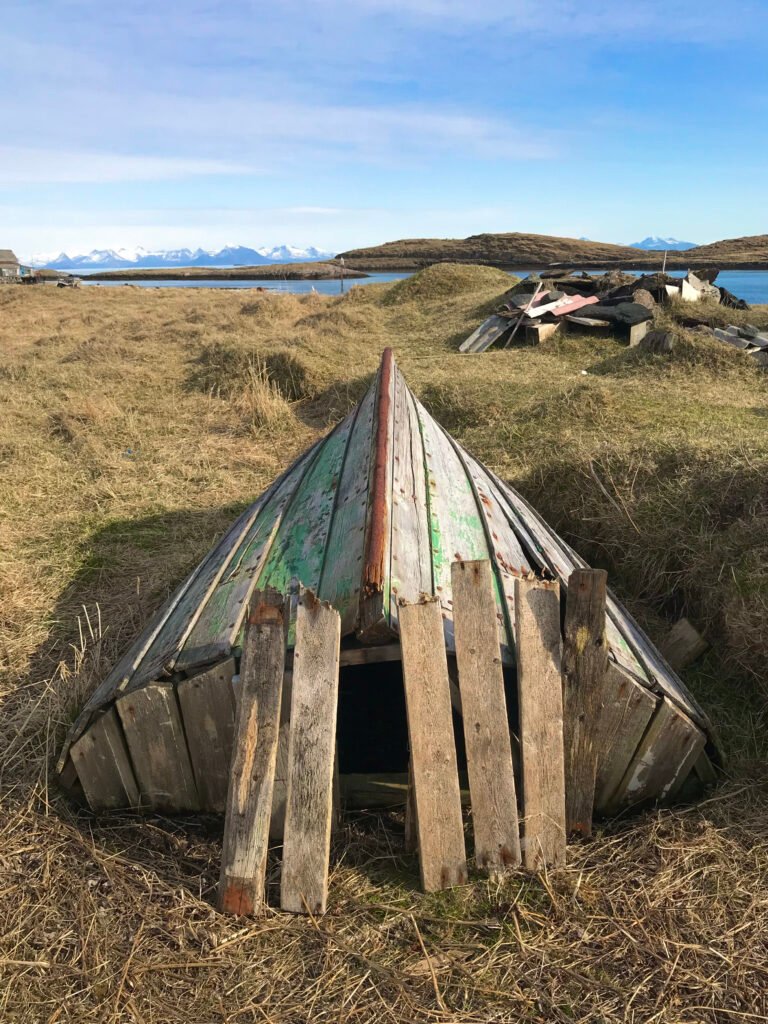

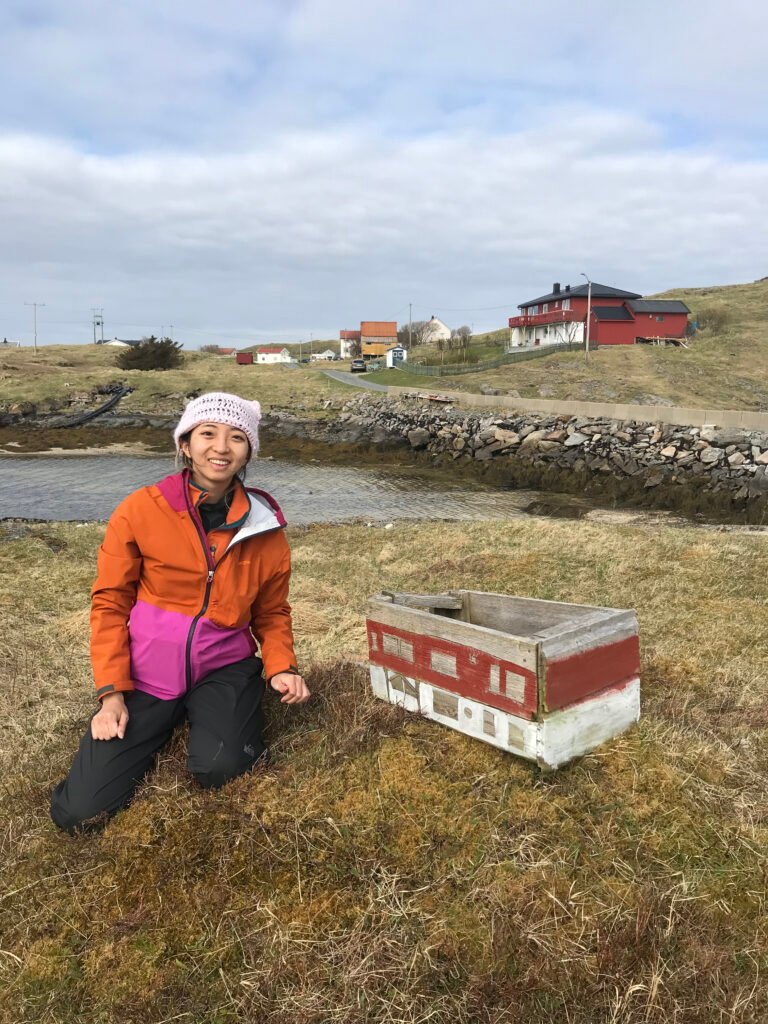

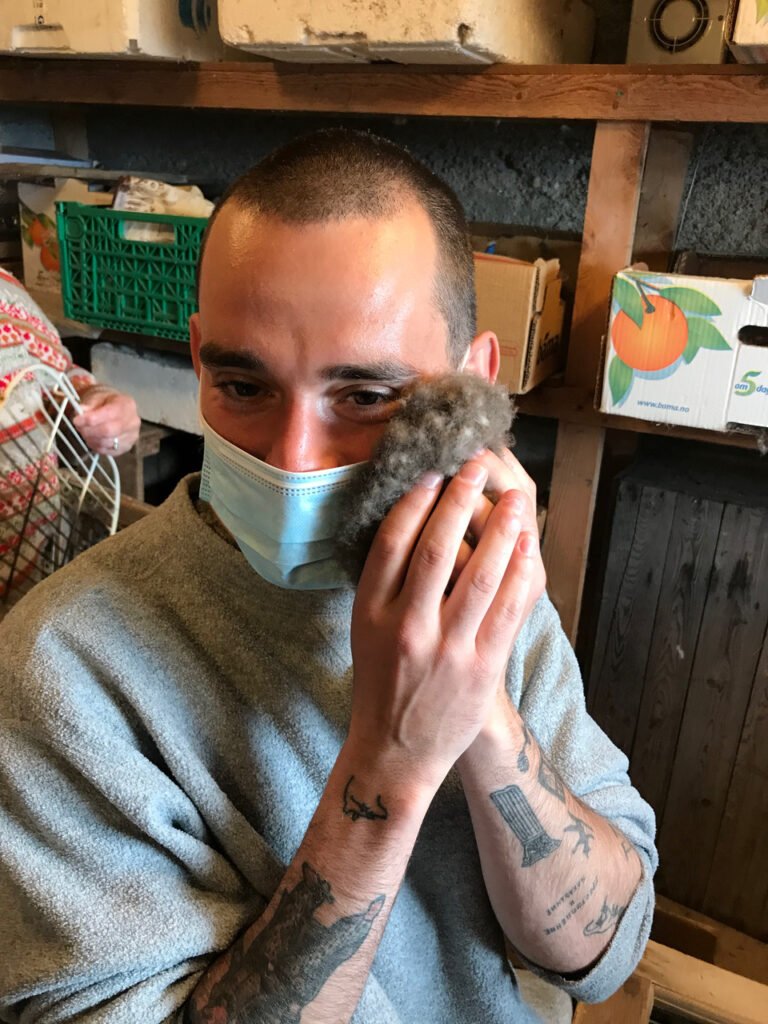
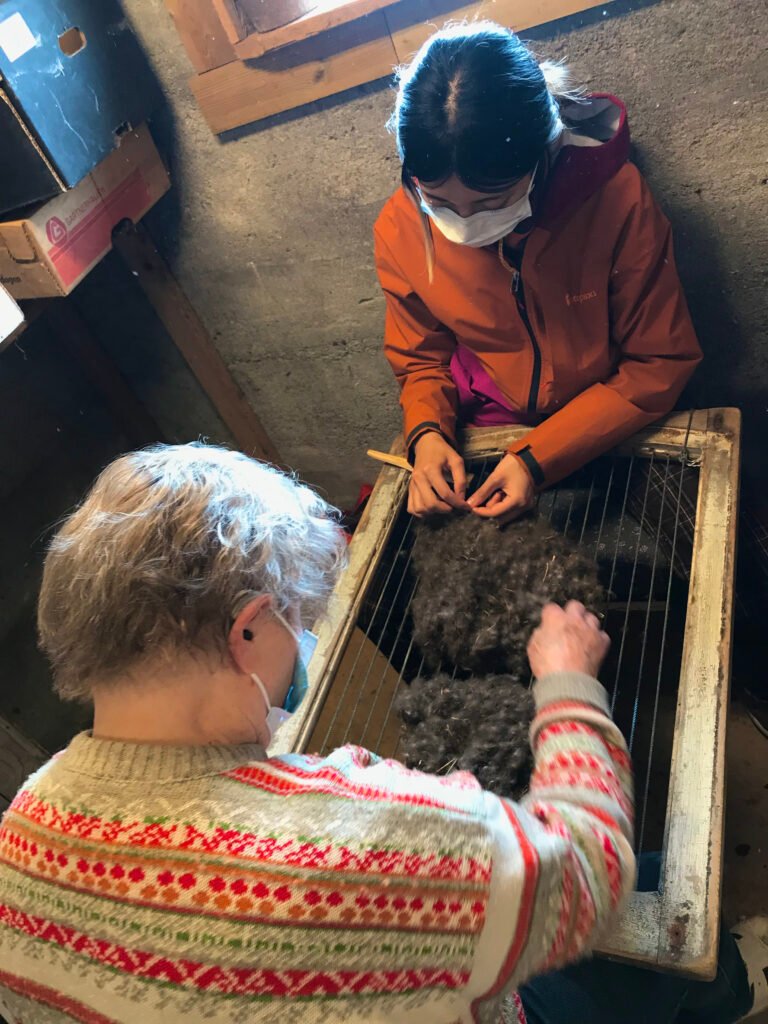
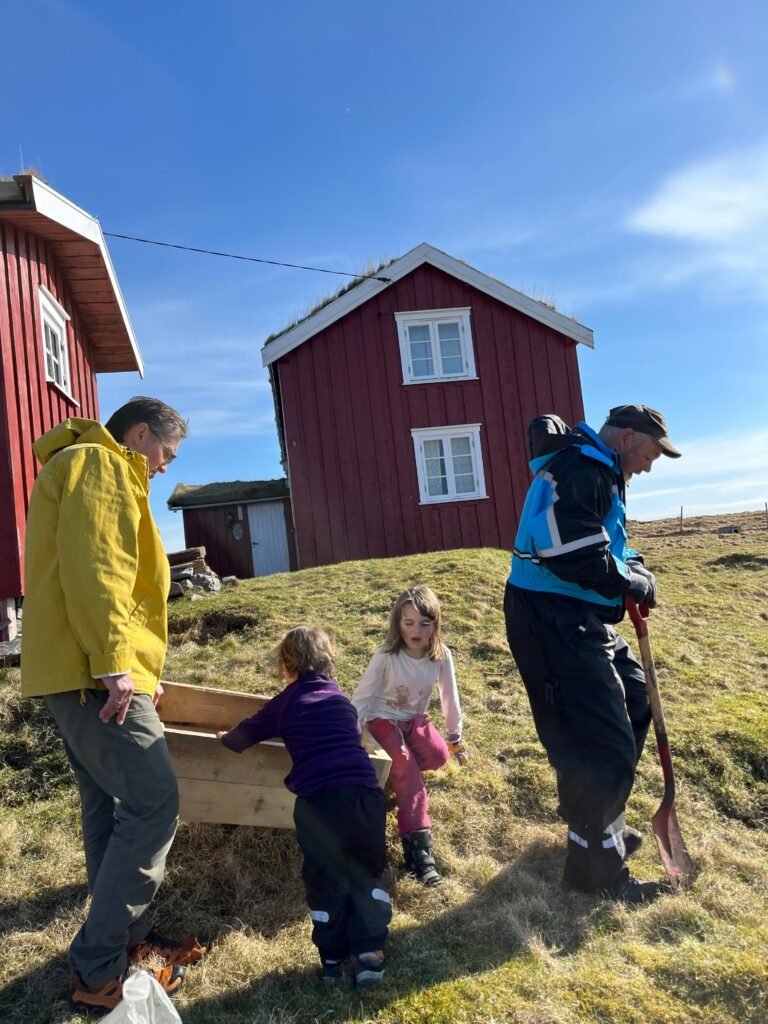
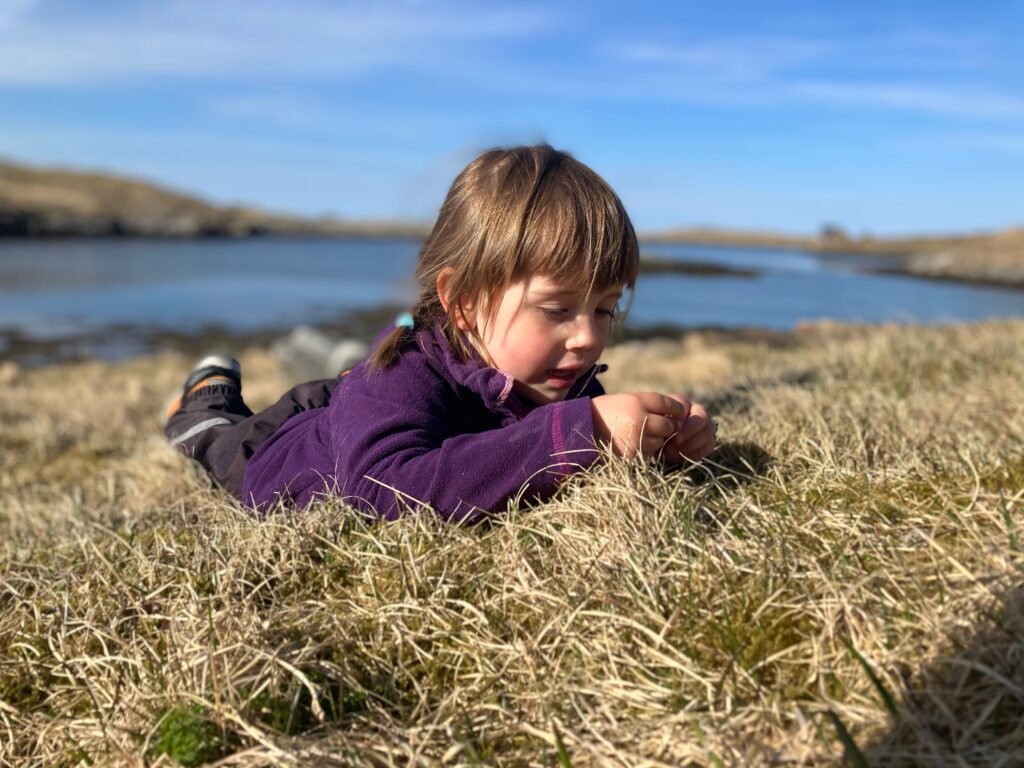
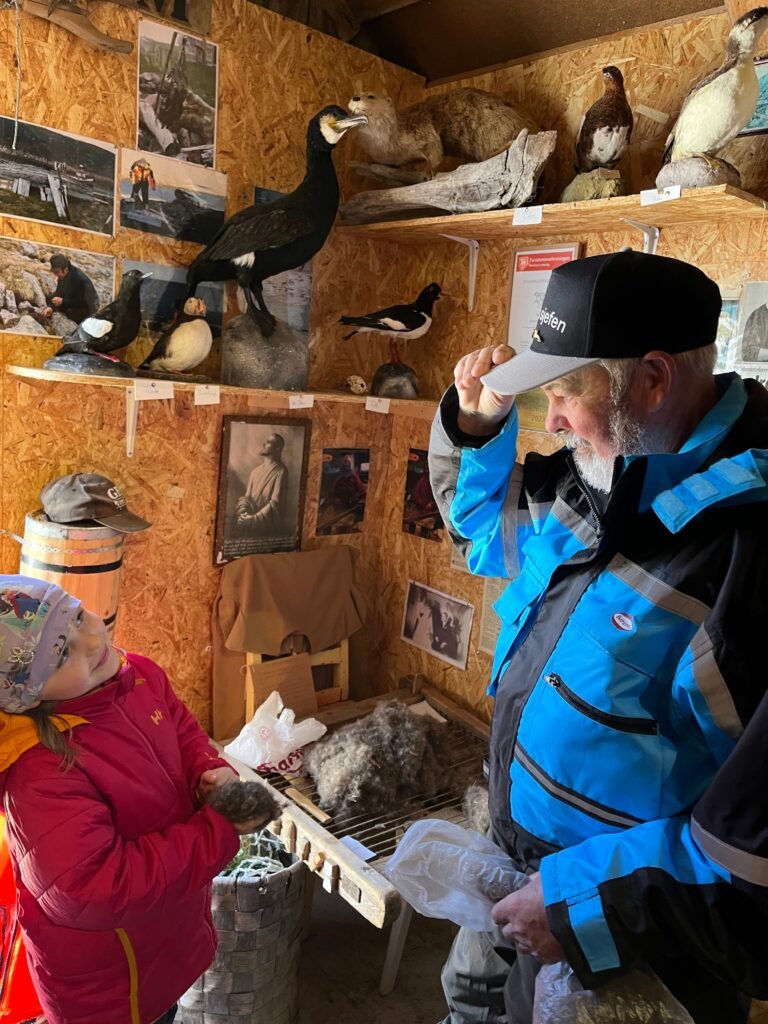
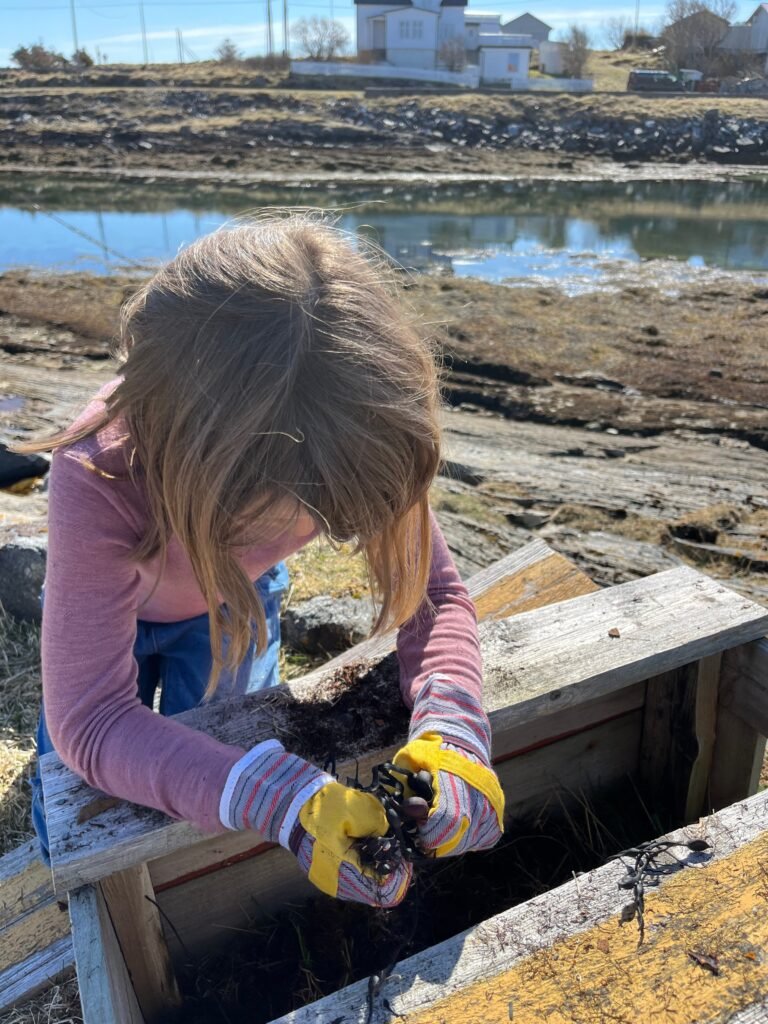
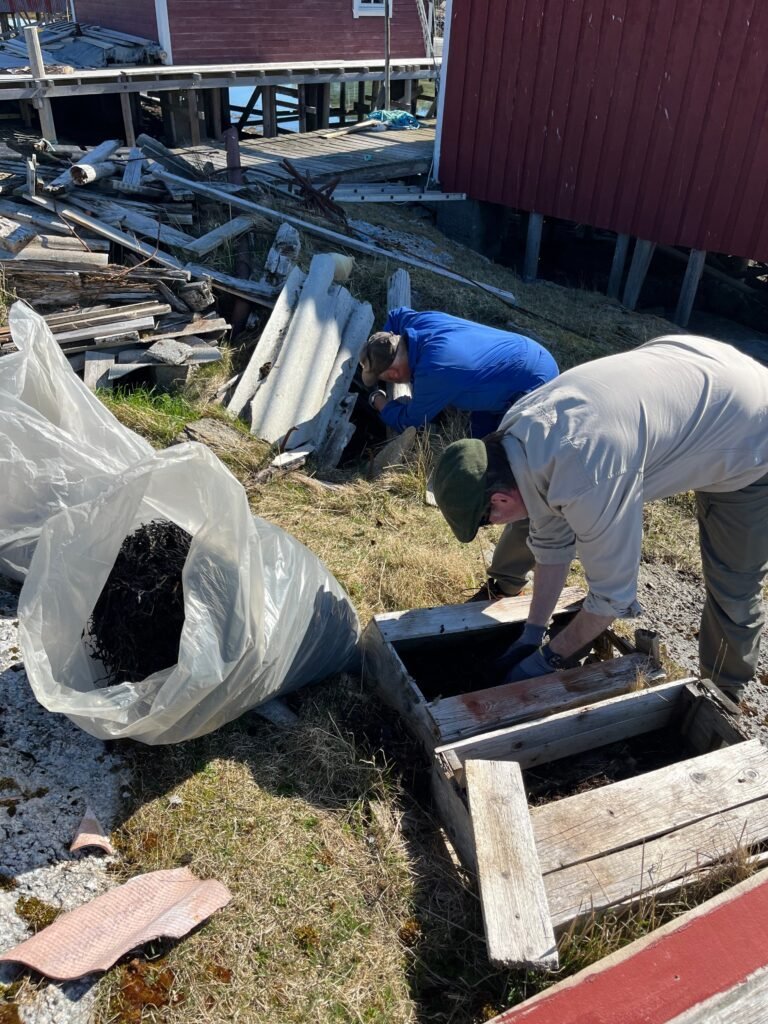
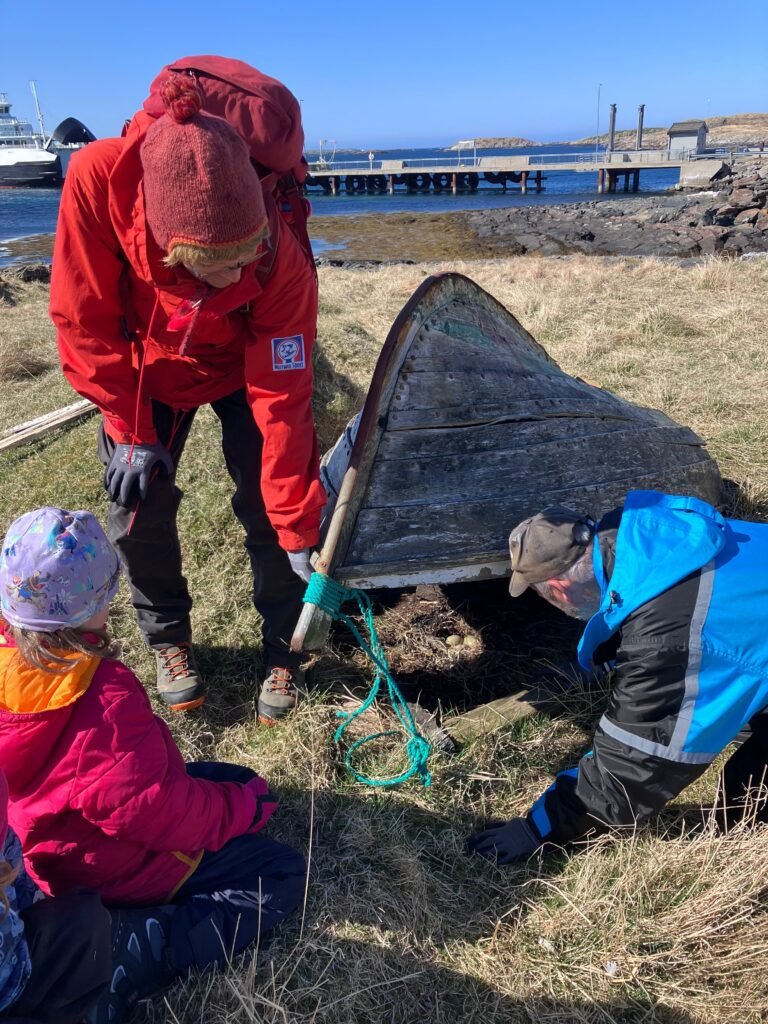
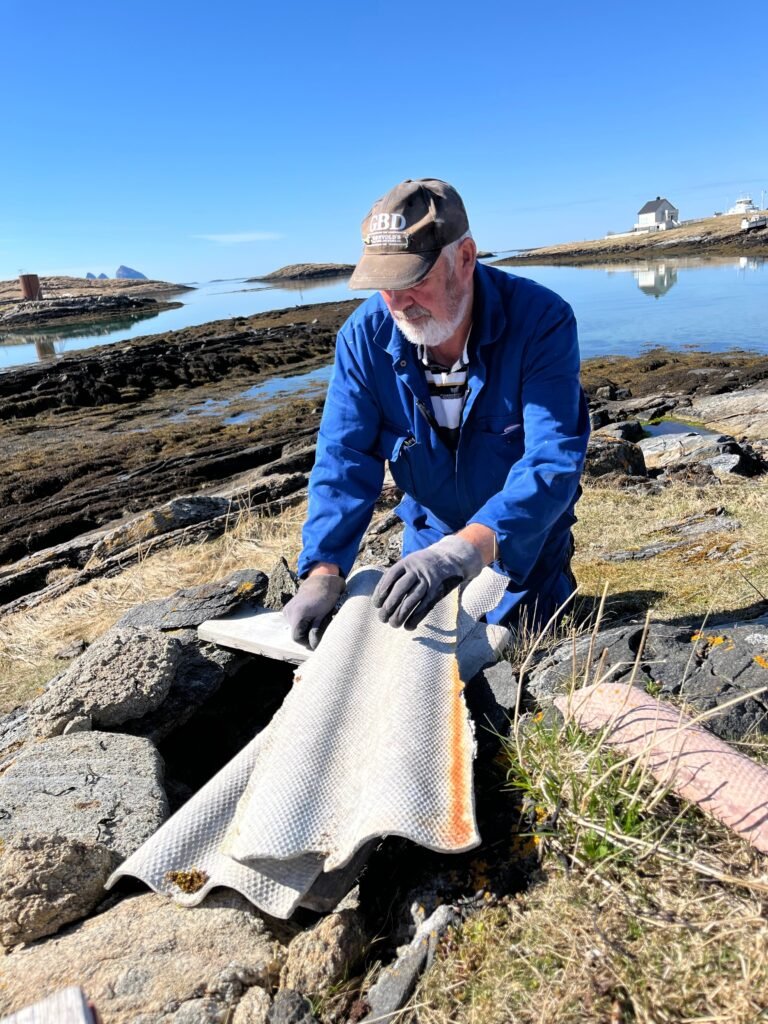

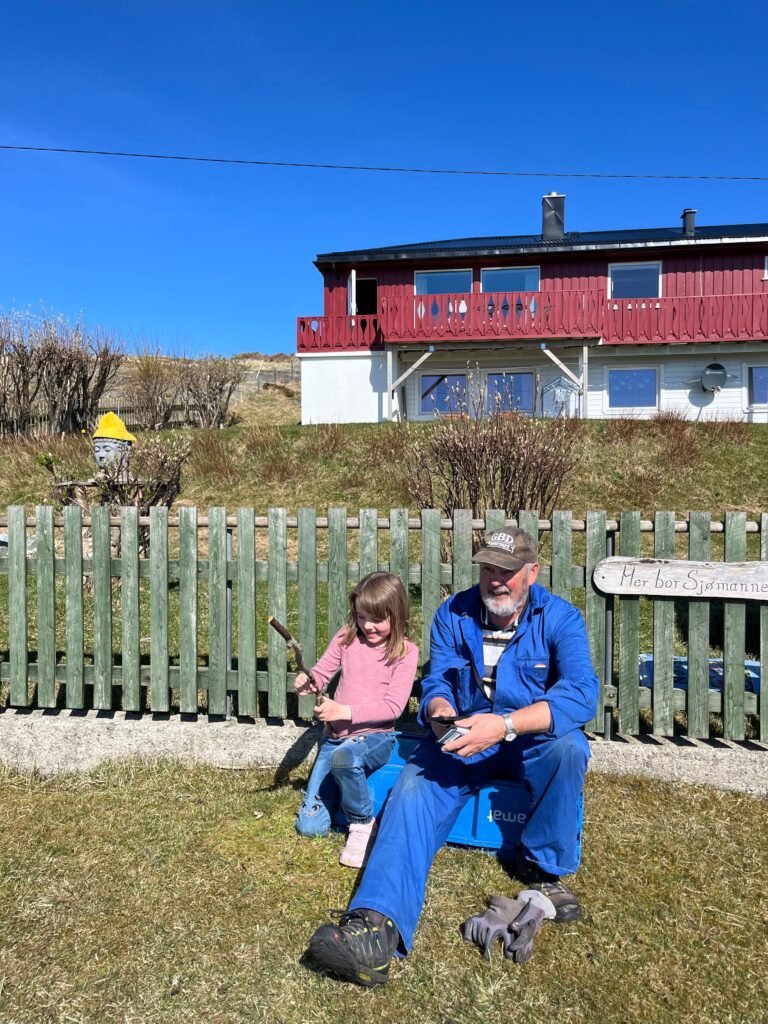
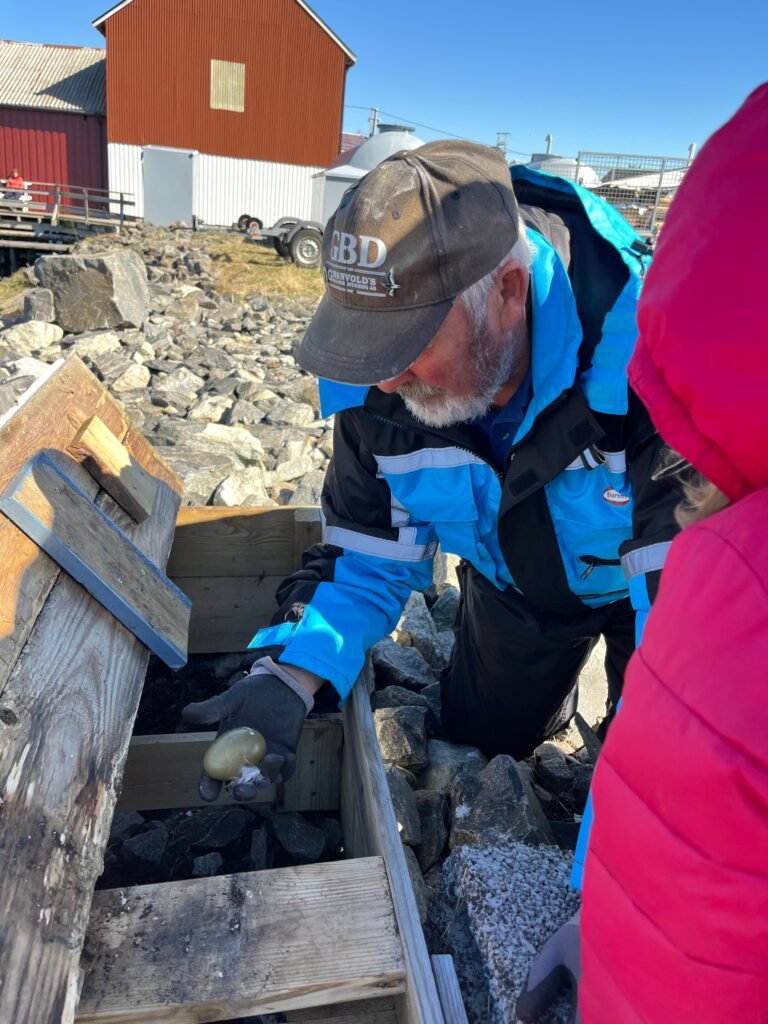
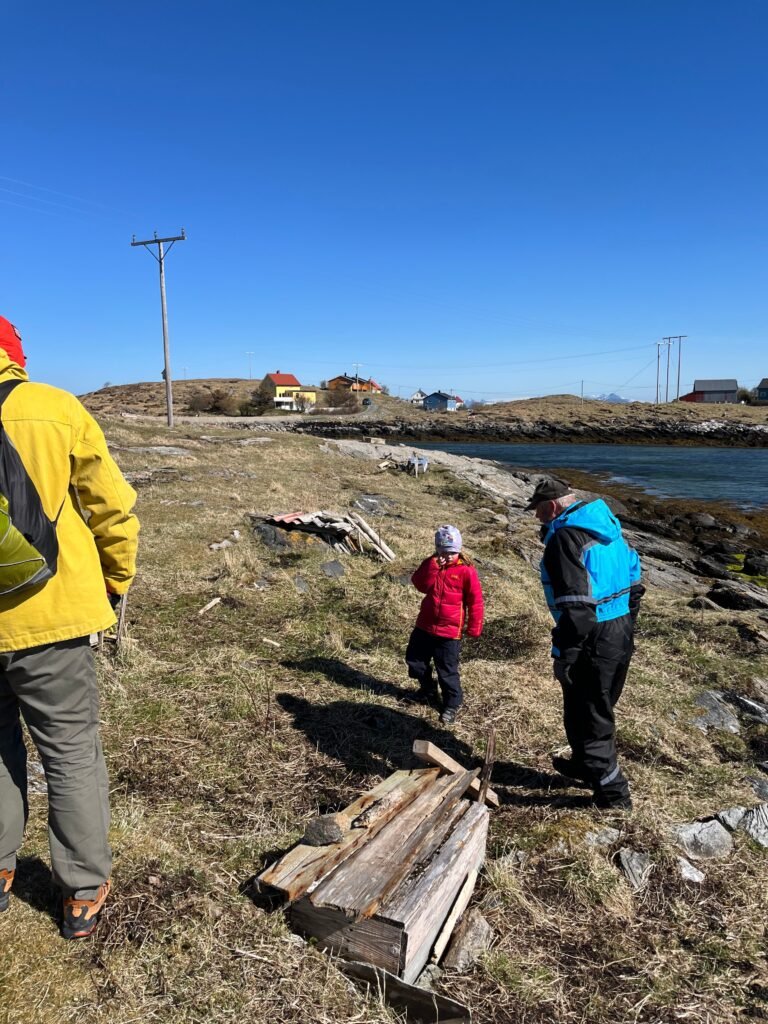
Background for the project
The number of eiders and other seabirds has declined by more than 70 per cent over the past fifty years and is among the most threatened species group worldwide. Food shortages are the main cause, resulting from the unstable weather and warmer seas of a changing climate as well as environmental toxins, pollution, hunting and industrial overfishing. Other additional factors include the introduction of non-native predators such as mink; native predators whose food stocks are also depleted; motorised traffic and other disturbances in breeding areas and the loss of nature for industrial purposes. If we humans do not change our behavioural patterns, there will soon be no seabirds left.
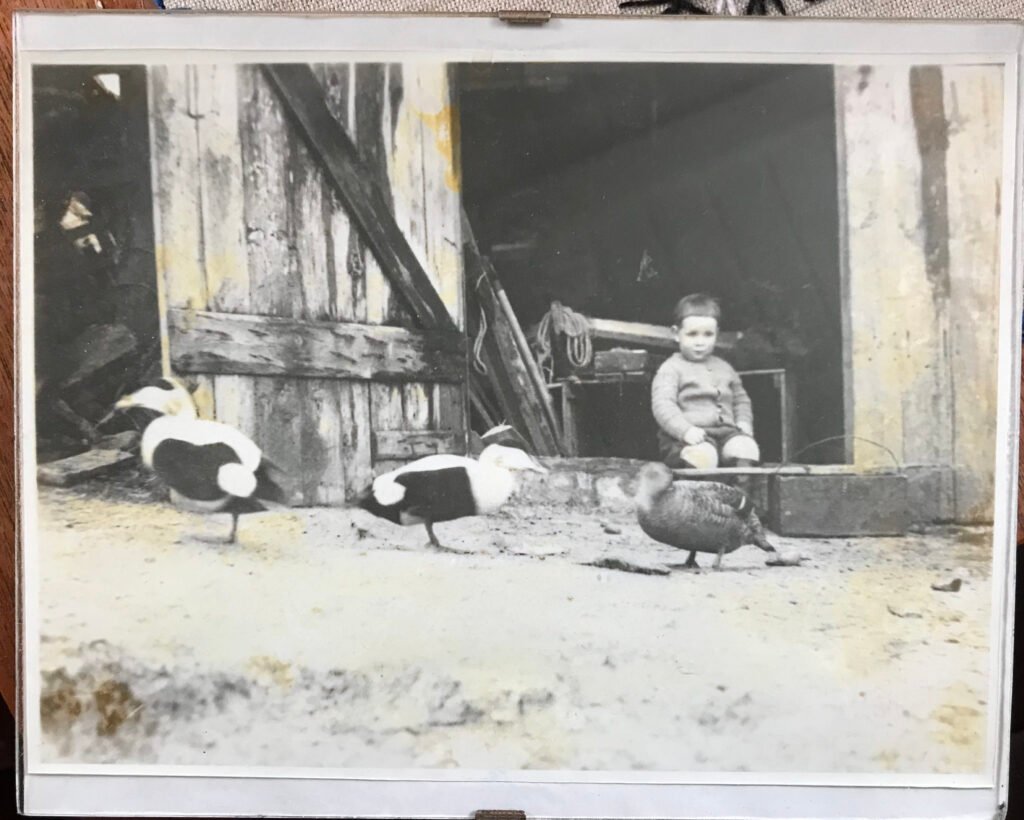
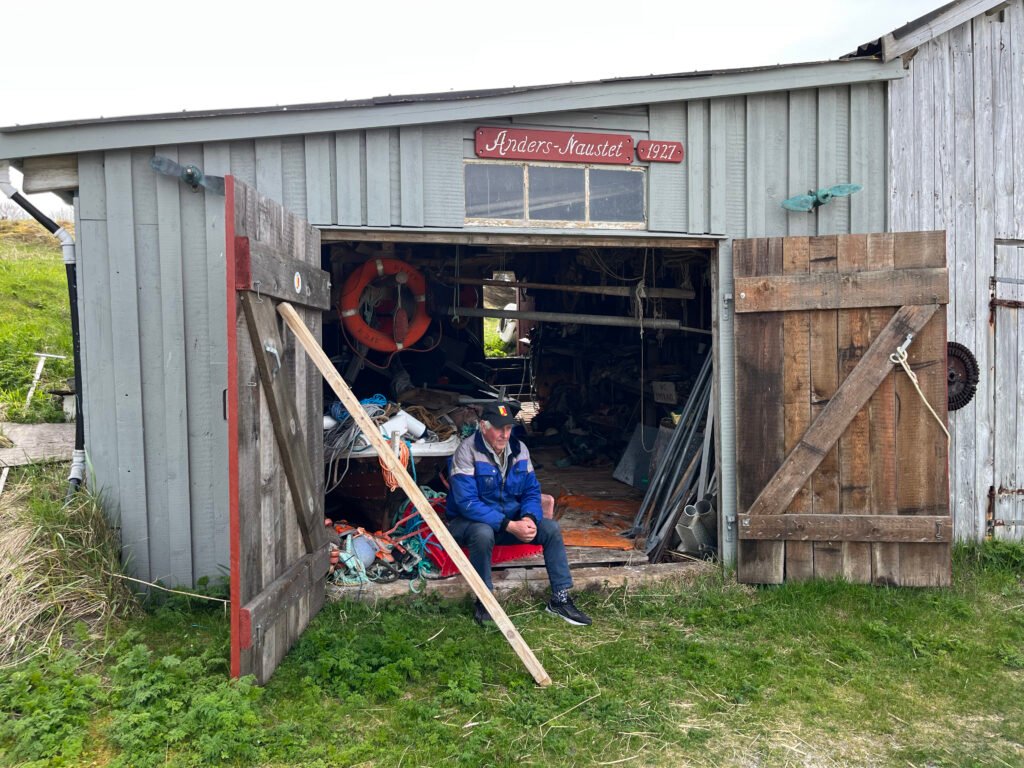
By creating this project we are hoping to bring attention to the critical situation for eider ducks and other seabirds. We also want to celebrate the unique and beautiful interspecies kinship and collaboration between humans and birds that has, and still is to some extent, taken place on the north coast of Norway and all the way around the Barents sea for centuries. Here, people have been tending for eider ducks during the breeding season in May and June, scaring off predators, and receiving eiderdown in return when the chicks have left their nests. On the Træna islands there are now only two eider tenders left that are keeping this unique tradition alive; Eivind Hanssen on Selvær and Jann Sandøy. Every spring they are building and mending eider houses and making the nest foundations from dried seaweed, preparing for their arrival. Once the eiders have left their nests they collect the down which they give to the legendary 86 year old Gerd, who spends her winters meticulously cleaning it for bits of grass and seaweed to make duvets. Each duvet requires down from 60 nests and takes many months and lots of patience and dedication to make.This was once a very much needed income for the islanders but is no longer done for profit. The eider tenders do not get a penny for their work. They do it for the love of the birds and for keeping this beautiful tradition and unique collaboration alive. This mutually beneficial partnership is now on the verge of extinction. Young islanders have little interest in keeping up this labour intensive and non profitable tradition. It is easier and definitely better payed work to be had in the salmon industry. As the traditional coastal fishery is also lacking fresh recruitment, people are moving away from the islands. “When there are no people on the islands there are no eiders.” – the eider tenders told us.
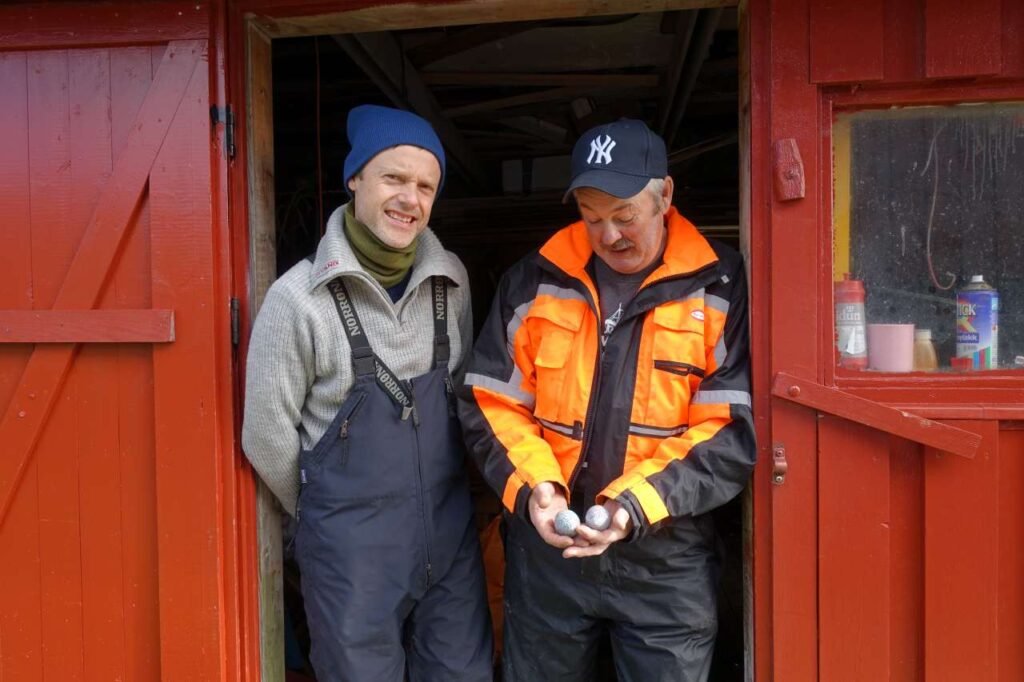
Biologist Thomas Holm Carlsen and eider carer Eivind Hansen, Selvær. Photo: NIBIO
For 20 years the biologist Thomas Holm Carlsen has worked closely with the eider duck tenders. He monitors the eider duck colonies by capturing, tagging, measuring and attaching loggers for the registration of winter migratory routes. Thomas has provided a much appreciated link between the artists and the community of humans and birds on the islands and has generously shared his knowledge and findings with us.
This project is about a lot more than just portraying the relationship between eiders and people. The close relationship to the birds, the care and the awareness of the weather and the language of the sea as well as the sky. All the sounds of the birds, like a mighty choir. The mesmerising eider down. And the experiential knowledge both in the human and bird cultures that connect the threads together. It is like an almost invisible and delicate network of seamlessly intertwined and finely tuned strings that have formed over centuries between nature and culture. Through the different artworks, we are hoping to convey some of this finely tuned lacework, braiding together the threads between the birds, the people and nature as a whole. In these times when we are losing our wilderness and species at an unprecedented rate, this embedded knowledge is not just a nostalgic revery but conveys an ubiquitous and more-than-human way of thinking, sensing and navigating into a more sensitive and truly sustainable way of living with nature.
Participants in Ahoo Ahoo

Eva Bakkeslett (NO)
Artist/Curator
Eva Bakkeslett is an artist, curator and cultural activist. Through her work, she conveys connections between nature and culture as a living organism. Communication across species boundaries, bacterial cultures and fermentation as a process and metaphor is central to her work and disseminated in the form of socially engaged and inclusive projects. Her work provides insight into poetic, sensory and transformative processes where new perspectives are revealed and materialised. Eva is curating The Conference of the Birds with Ulrika Jansson.

Thomas Holm Carlsen (NO)
Biologist
Thomas is a researcher at NIBIO at Tjøtta (Nordland) and has a degree in biology in terrestrial ecology from NTNU, Trondheim. Thomas has worked with eider ducks and the culture of collecting eider down since 2007. He has led several Nordic cooperation projects regarding the unique eider tradition and has lived and worked with eider ducks in Iceland for two years (2013-2015). From 2016 to date, he has monitored Eivind’s eider colony on Selvær by capturing, tagging, measuring and putting on loggers (GLS technology) for the registration of migratory routes in the winter.
Thomas has mapped species, vegetation types and habitat types both in Norway and in Iceland for 21 seasons. He has worked in various projects such as management plans, impact assessments, habitat type and vegetation type mapping, vulnerability analyses and monitoring. He has good species knowledge in botany, game (especially birds), insects, as well as some knowledge in moss, fungi and lichen.
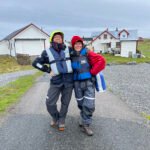
Riitta Ikonen & Karoline Hjorth (FI/NO)
Artists
Hjorth & Ikonen have collaborated since 2011 on publications and projects including Eyes as Big as Plates (ongoing). Starting out in 2011 studying folkloric explanations to natural phenomenons, the ongoing collaborative series Eyes as Big as Plates has evolved into a continual search for modern human’s belonging to nature. With the goal of combining the powers of art, science and activism, the Norwegian-Finnish artist duo is increasingly portraying people who are actively engaged in the climate emergency discourse, exploring the potential of art to propel actionable system change.

Eider duck (Somateria Molissima)
BIRD
The eider is a diving duck that lives in polar regions of the northern hemisphere. For centuries our species have collaborated with humans. Human archaeologists have found traces of our species in Stone Age landfills and mapped on rock carvings in northern Norway. Remains of our down have also been found as duvet filling from later times, including the Oseberg find, dated to around the year 800.
www.npolar.no/
Humans help us build our nests and look after us during the nesting period. In return we generously share our soft down when our chicks have hatched. We have had this collaboration for thousands of years all along the coast of Norway, the Barents Sea and Iceland. Sadly, in the last 50 years humans have largely stopped this tradition. Because of the lack of food and undisturbed places for us to live and breed, our numbers have plummeted. We are now only 20% of the population we were 40 years ago.


